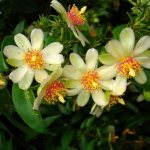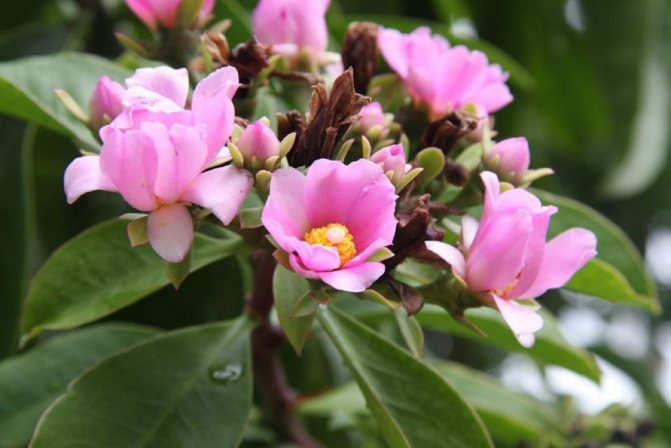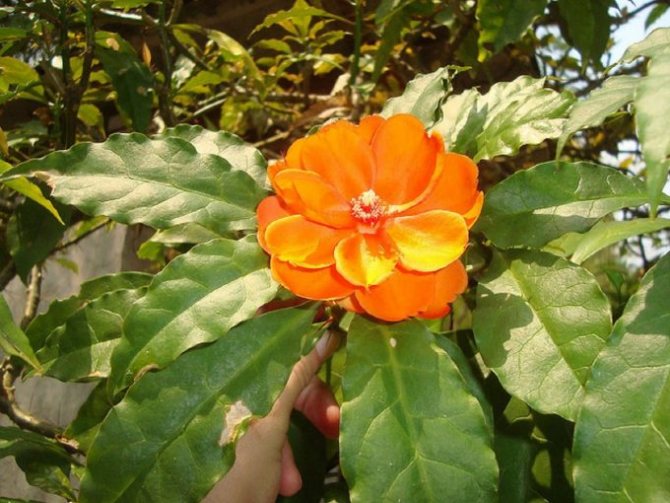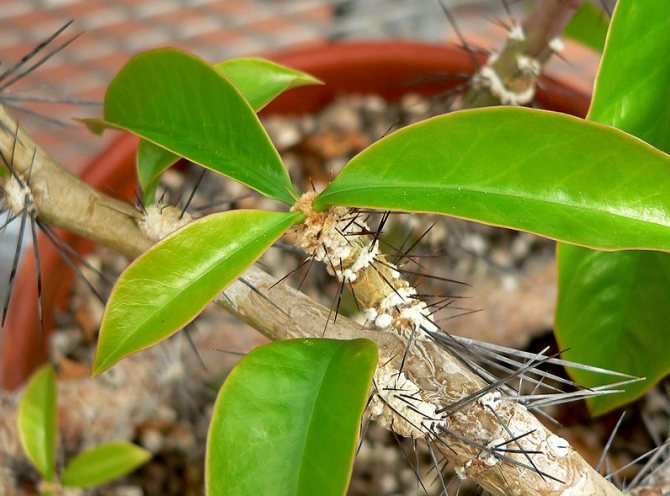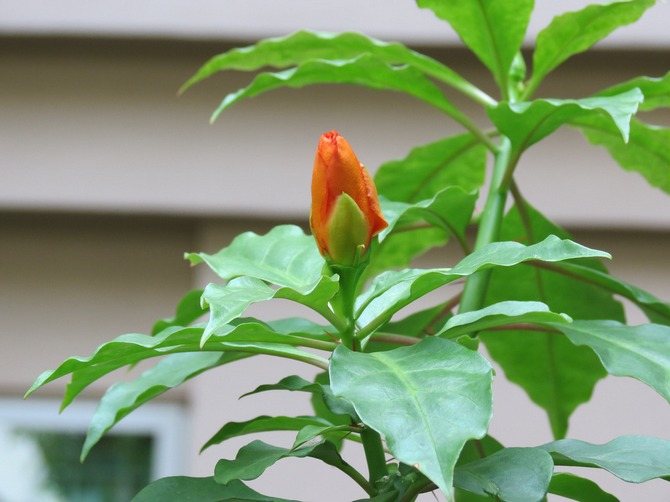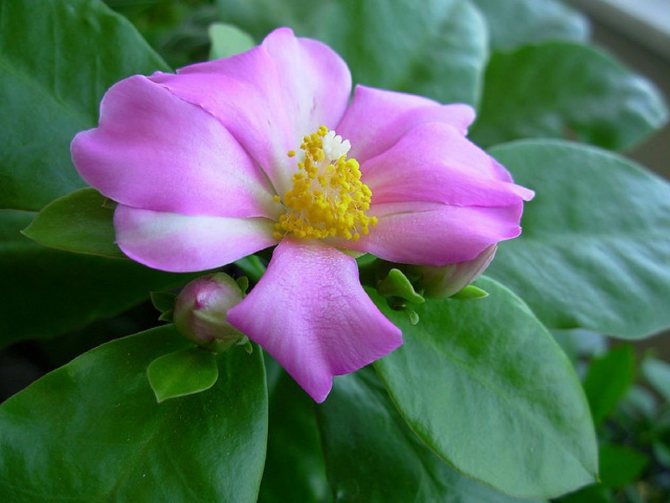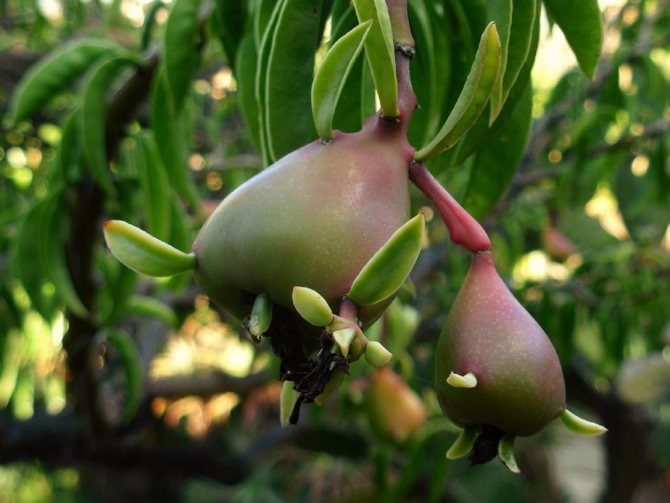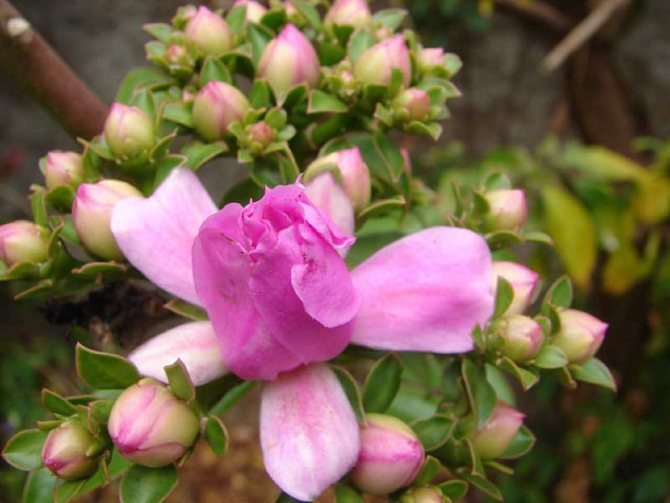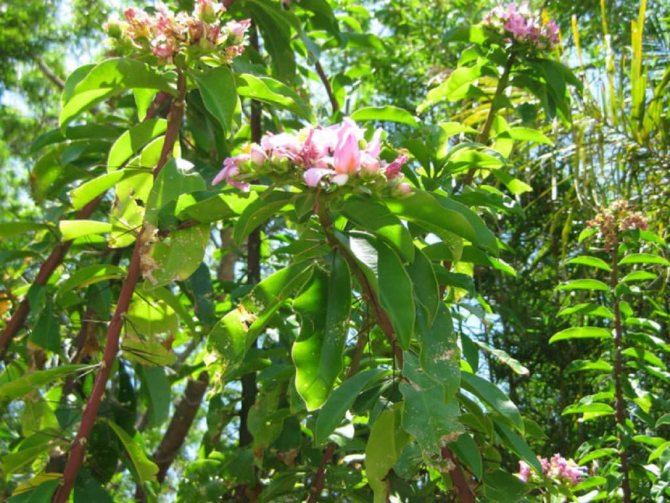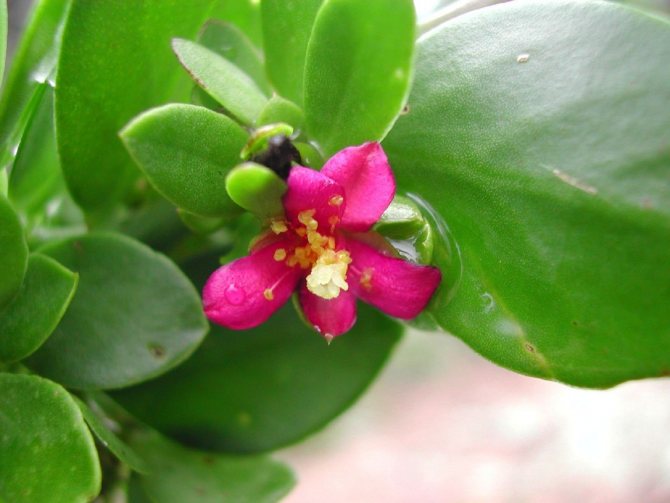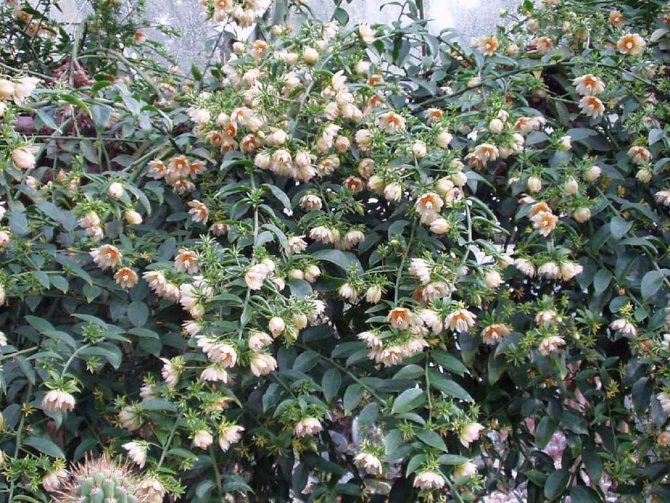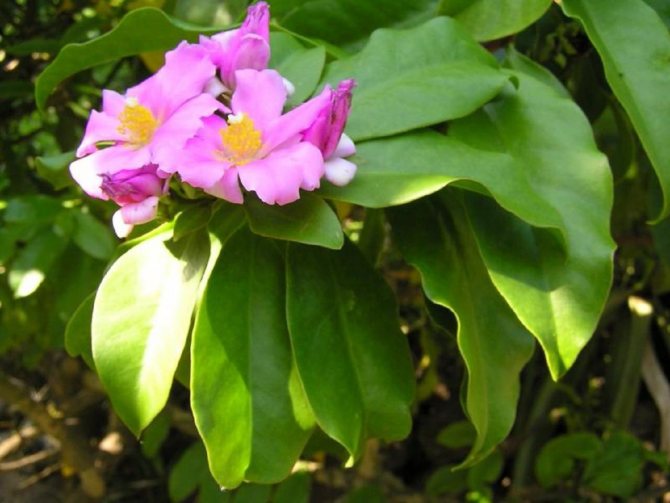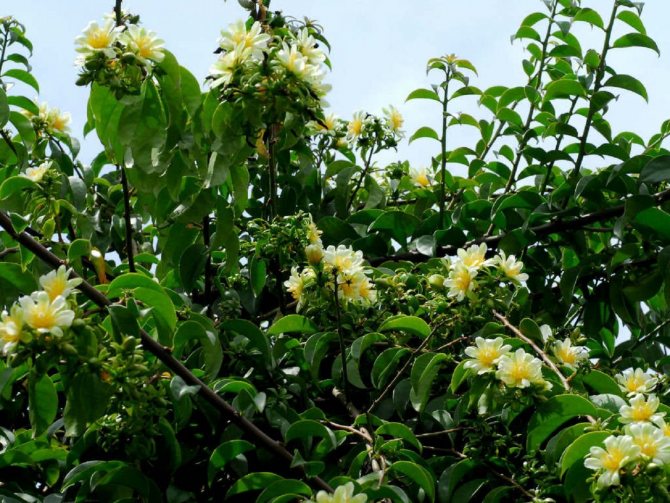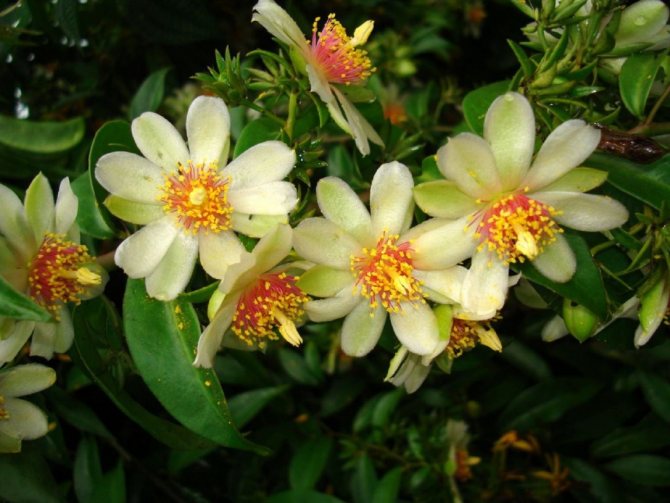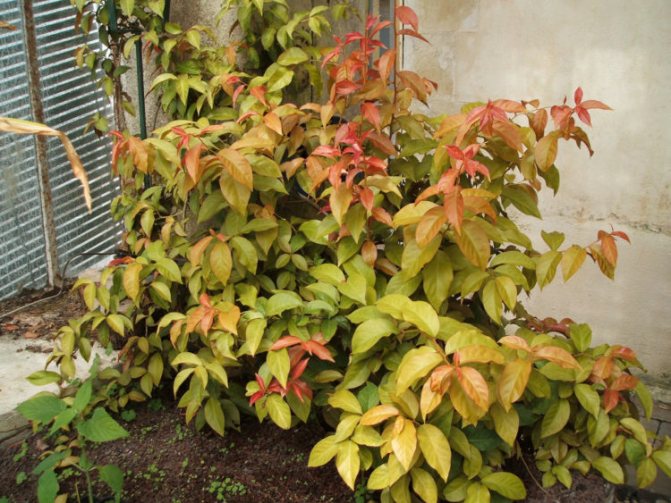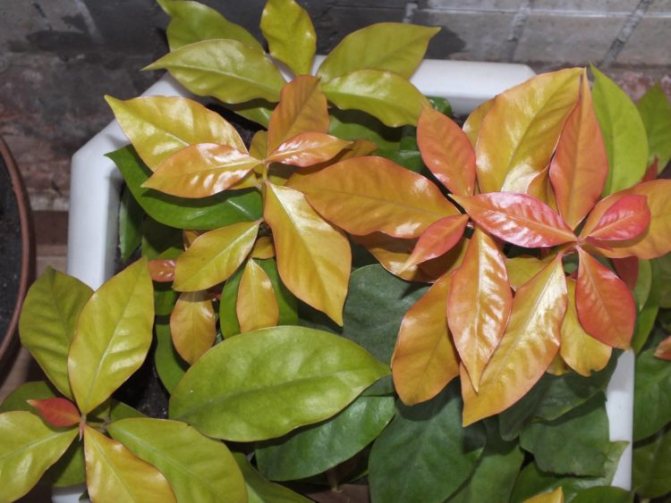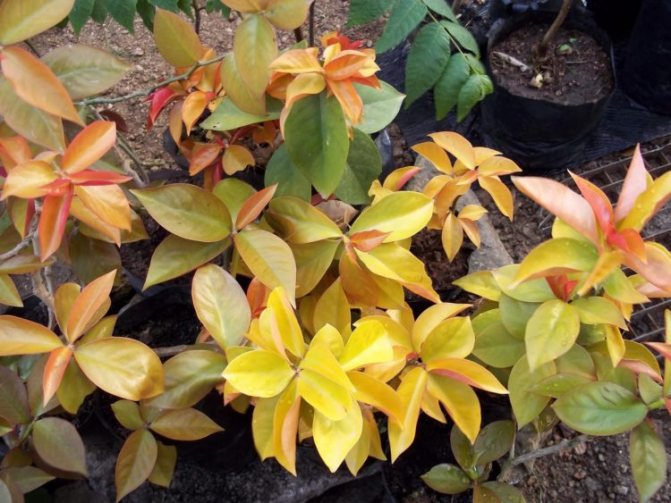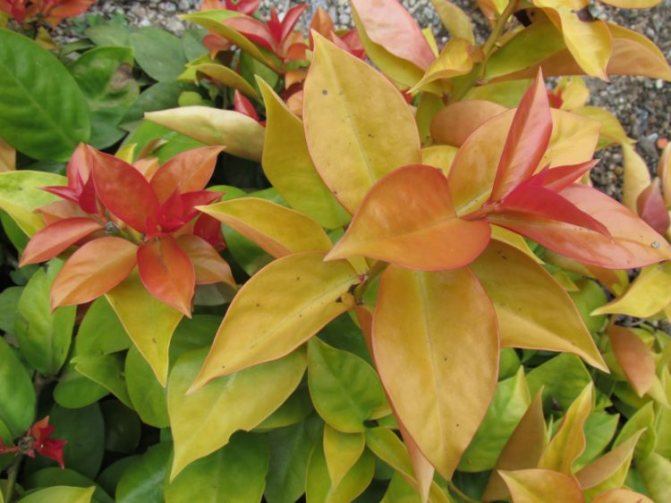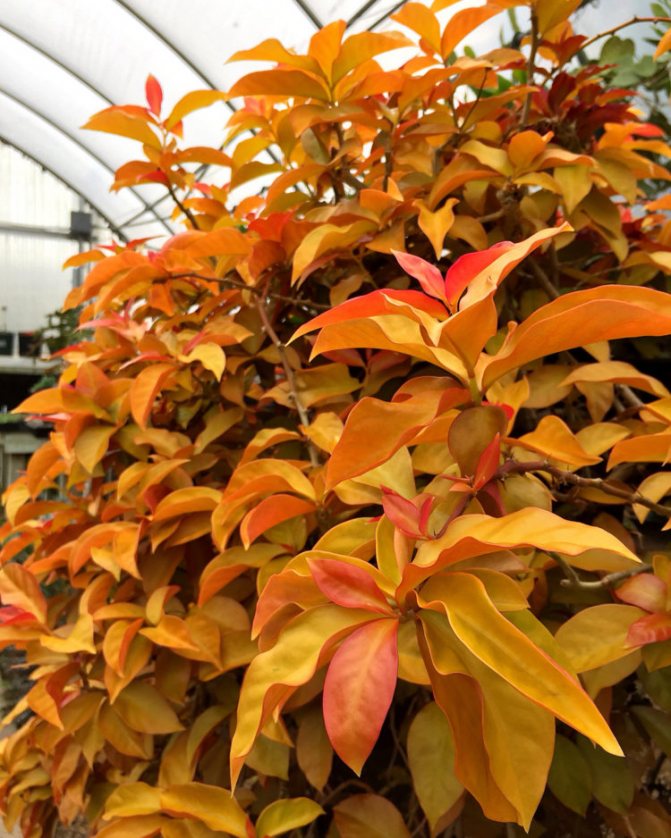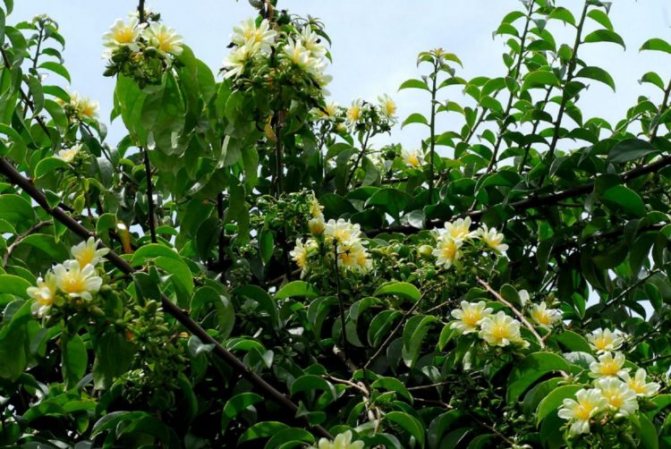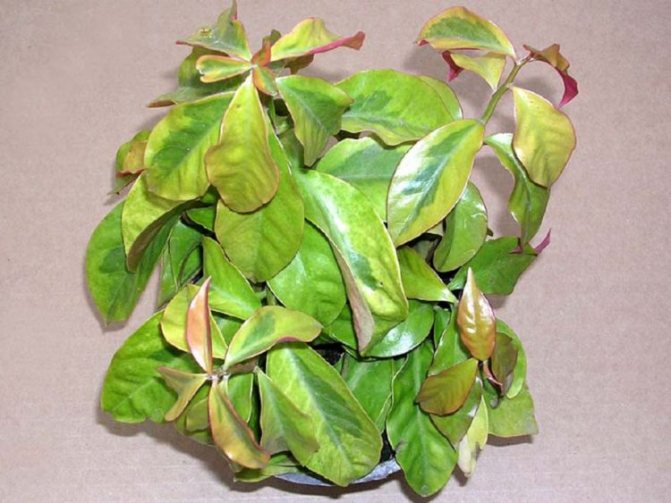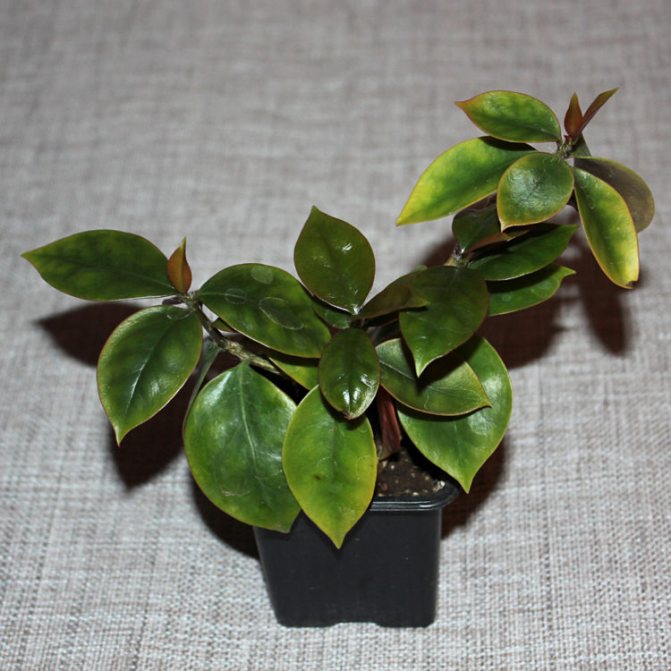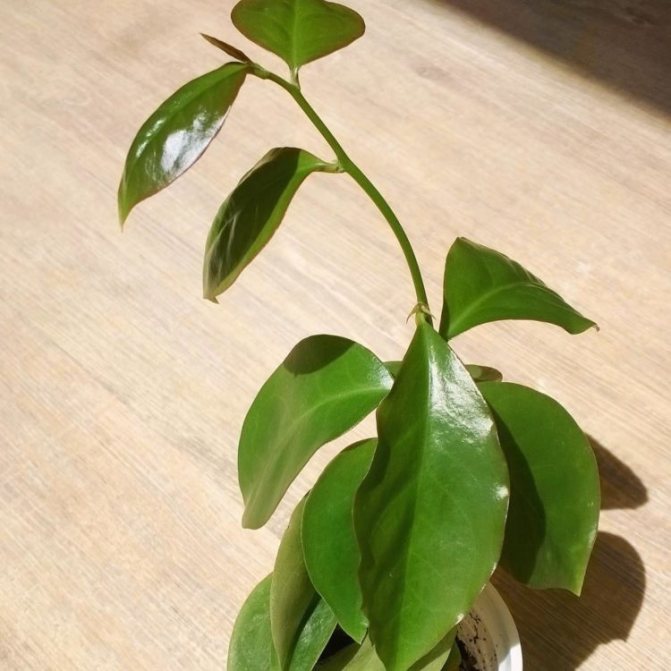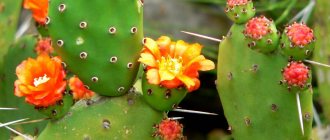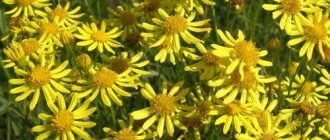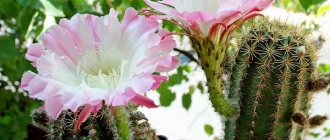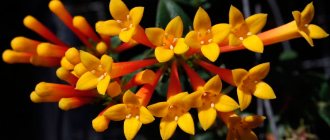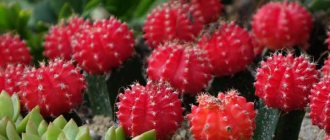Views from photo
Pereskia grows very quickly. It can grow up to 20-25 cm per year. It is mainly found in the form of large shrubs, low-growing trees with thorny climbing stems.
This cactus is also known by another name - "Surinamese Gooseberry", thanks to its edible fruits that grow up to 2.5 cm. In South America, this cactus is used as a hedge. This highly branched vine sometimes grows up to 10 m.It has a fleshy stem, the diameter of which is about 2 cm.
And also dark green oval leaves 9-10 cm long and 4-5 cm wide. As they grow, the lower leaves fall off, leaving a stem with long and hard spines. Flowers, yellow-white with a pinkish tinge, bloom on young shoots at the end of August. The flowers have a sweetish aroma, reaching a diameter of 5 cm.
The photo shows "Pereskia Thorny" with proper care at home:
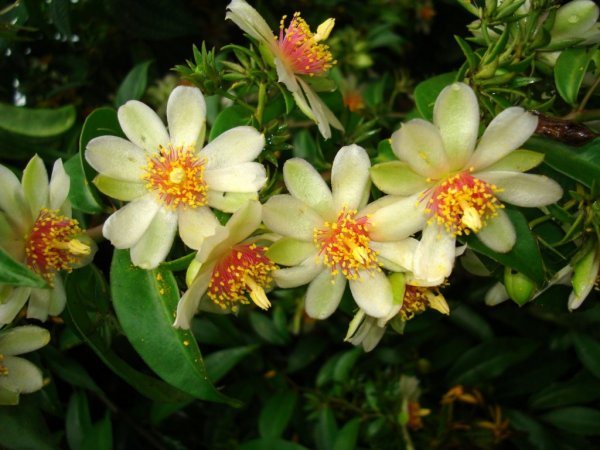
Grows up to 2 m. It has a thin, erect stem with long black spines. The leaves are narrow, elliptical in shape. The top of the leaf is golden green, and the bottom is red or purple. The flowers are white, small, reminiscent of wild rose flowers.
The photo shows "Pereskia Godseffa" with proper care at home:
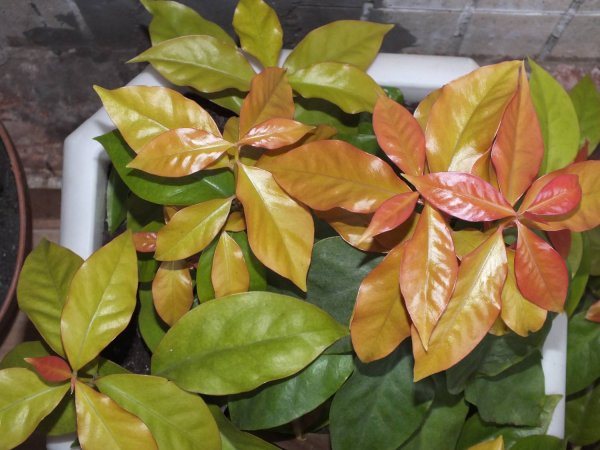

"Bolshetsvetkovaya"
In the wild, it reaches a height of 5 m, with a trunk diameter of 20 cm. Leaves are leathery, about 25 cm long, fall in winter when the thermometer drops below 10. On the trunk there are at least 90 thorns, reaching 4 cm. The flowers are pinkish and collected in inflorescences.
The photo shows "Pereskia Bolshetsvetkovaya" with proper care at home:
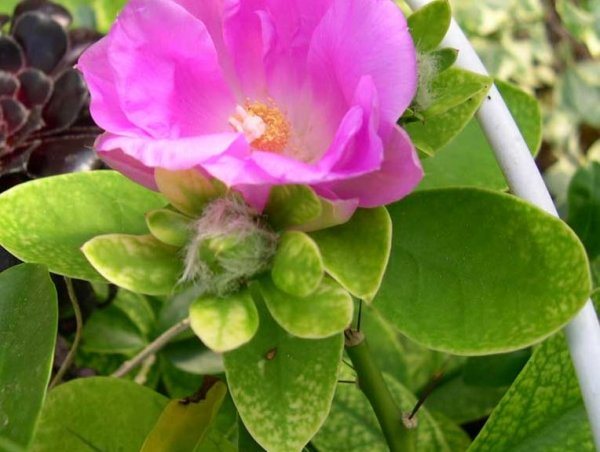

"Orange" (Bleo)
Blooms in the summer months. She has bright orange-red flowers, about 5 cm in diameter, reminiscent of a rose, open in the evening. Forms a bright yellow fruit that smells like pineapple, but is inedible. It grows up to 5 m and has large leaves.
The photo shows "Pereskia Orange" with proper care at home:
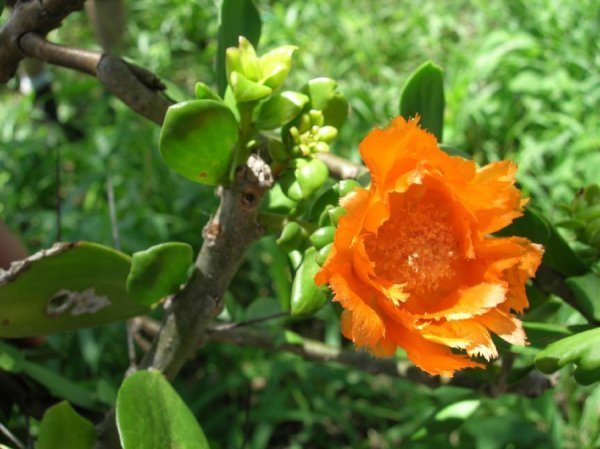

Varieties
Breeders identify 18 varieties of pereskii, which include both shrubs and trees. We will tell you about the most interesting and common types below.
Pereskia prickly
The pereskia prickly (lat.Pereskia aculeata) has several names - pereskia prickly, Barbados gooseberry. This plant stands out from other species in that it climbs in the shape of a liana, as well as for the fact that it has edible leaves and fruits. Refers to semi-deciduous shrubs. In the wild, it grows in Panama, on the shores of South America, in the Antilles.
The length of the stem twisting around the support can reach 10 m, in apartment conditions - up to 3 m. The leaves of this representative of the genus peresky are oval, they can be from 3 to 10 cm long. They are green in color. Forms with red and violet coloration of the bottom plate of the leaf are bred. There are thorns on the stem. The older the plant, the more massive and dense they are.
At the end of summer, the period of flowering begins at the prickly periscus. The flowers are cupped, milky with a pinkish tinge. They have a light pleasant aroma.
During fruiting, round and oval fruits of yellow, orange or red flowers appear, measuring 1-2 cm in diameter. Fruit pulp and leaves can be eaten.
The plant is planted in open ground to create beautiful hedges. It reaches its greatest decorative effect in greenhouses.
Did you know? Many people prefer to collect cacti. The first collection of exotic plants was collected in the second half of the 16th century by a London pharmacist named Morgan.
Pereskia Godseff
Pereskia godseffiana (Latin Pereskia godseffiana) has thin stems with black spines, growing bunches. The leaves are oval in shape, with pointed edges 6 cm long. The upper leaf plate is painted in a light green color, its center is in a darker shade. The lower leaf plates are pink or purple.
During flowering, medium-sized white or cream-colored flowers are formed. Sometimes Godseff's pereskiy is distinguished as a separate species.
Pereskia orange
Pereskia orange (lat.Pereskia bleo) grows from 2 to 8 m. Her bush is weakly branched. Young stems are covered with olive-colored bark. Their diameter reaches 15 cm.
The leaves are large with distinct veins. They grow on long petioles. During flowering, bright orange large flowers with a diameter of 5-6 cm are formed. Outwardly, they resemble roses.
We recommend reading about 10 popular home flowering cacti.
The fruits are cone-shaped and have a pleasant pineapple scent. Unsuitable for food.
This species is found in Panama and Colombia at an altitude of 400-900 meters above sea level. It is actively grown in Malaysia for decorative and medicinal purposes. Locals believe that orange pereskii leaves are a good prophylactic agent against stomach diseases and cancerous tumors. Also, funds based on them are used to reduce pressure, blood sugar levels.
Pereskia Grandiflora
Pereskia grandiflora, or large-flowered (lat.Pereskia grandiflora) in the wild grows up to 5 m in height and up to 20 cm in diameter. The stem is covered with numerous spines 2-3 cm long. It is rough, chestnut in color. Leaves are elongated, up to 23 cm in length. They grow on petioles up to 1.2 cm. They fall asleep at a temperature of +10 ° C.
As the name of the species implies, the flowers of its representatives are large. They have a deep pink color. Collected in inflorescences of 10-20 pieces, they can also grow singly. However, the lush flowering of this beautiful species can only be achieved by taking proper care of it.
Pereskia Weber
Weber's pereskia (Latin Pereskia webehana) forms small shrubs that are suitable for creating bonsai-style shrubs. The length of the stem reaches from 1 to 3 m, the diameter is up to 12 cm. The rhizome of the plant is thickened. The leaves are small, attached to the stem without cuttings.
This species has abundant flowering. The flowers are small - up to 2 cm in diameter, pinkish in color. Flowering is long, lasts from mid-spring to late summer.
Home care
At home, the ancient cactus grows quite quickly. It does not need special care. There are several rules for keeping a deciduous cactus.
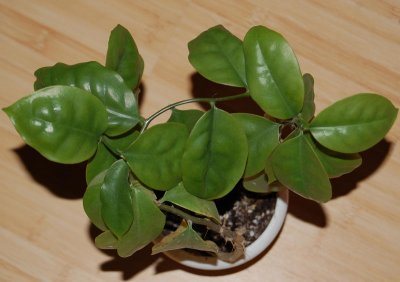

This is a light-loving plantbut the scorching sun should be avoided. In the summer months, there is a window on which Pereskia stands, shaded with a grid.
The best place for this cactus is south windows, especially in winter.
Due to the lack of lighting, the stem is stretched out, and the leaves become small and dull.
Recently purchased flowers cannot be immediately placed on the windowsill, exposing them to the sun. You need to get accustomed to the sun's rays gradually.
Temperature
In the summer months, the temperature should be no more than 27 degrees. In winter, during the dormant period, it is 10-15 degrees. The room must be ventilated, the cactus loves fresh air.
Air humidity
Air humidity does not affect the development of the ancient cactus in any way. Even during the heating season, when the air in the apartment is especially dry, the flower feels good. Spraying the leaves should be done solely to remove dust. And for the prevention of pests.
Watering should be carried out no earlier than the soil in the pot dries up. You need to water it with soft water, which has been kept for at least a day. The plant requires abundant watering during the period of intensive growth.
In winter, you do not need to fertilize the flower. And in the remaining months for fertilization, you need to use special fertilizer mixtures for cacti. The dosage is used half as much as described in the instructions. Fertilizers are applied monthly at the root. It is undesirable to use organic fertilizers.
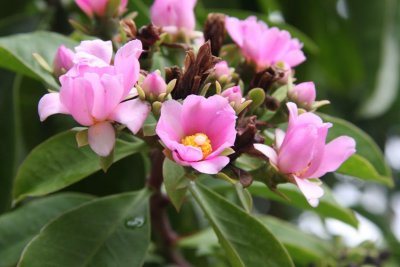

It is not recommended to transplant adult plants more often than once every 2-3 years.
Youngsters are transferred as they grow up.
Adults cross over when the root system fills the entire pot.
For transplanting, you can use ready-made soil, or you can prepare it yourself.
Take 2 parts of leafy, turfy land and humus, add 1 part of sand. For transplanting, you need to take large pots. Put drainage on the bottom of the pot, then use the prepared earthen mixture. After transplanting a cactus into a new pot, increased growth begins.
Reproduction
Ancient cactus propagates using seeds or ripe cuttings. You can use water for rooting. Place the stalk in a glass of water and replace it periodically.
Alternatively, you can use an earthen mixture as for replanting, but with a little charcoal. The ground must be constantly moist. The most suitable temperature is 26 degrees.
Plant photos
Here you can see what a cactus looks like:
Diseases and pests
If a cobweb appears on the underside of the sheet, and from above you can see small dots, which means that a spider mite has appeared. The leaves will begin to lose their color, become pale yellow.
Dots on the surface are formed from the suction of juice by mites. Gradually, these dots grow in size, forming large whitish spots, which can lead to shedding of leaves.
The spider mite infects the plant in dry air. Therefore, in preventive measures, it is worth periodically humidifying the air. You also need to remove fallen leaves, periodically wash the leaves from dust.
First of all, if a spider mite is affected, the plant should be treated with soapy water, after covering the soil. If the lesion is extensive, then chemicals should be used.
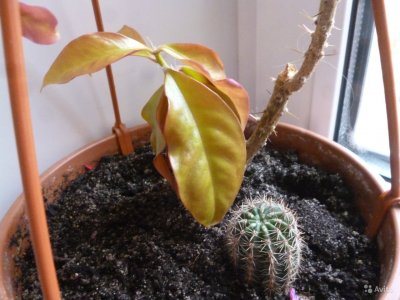

Another pest is the cactus scale insect.
It can be orange or pale yellow in color with a rounded shield, about 2 mm.
They mainly affect the upper side of the leaf.
After damage, yellow spots appear on the leaves.
After a while, the leaves fall off.
First of all, you need to treat the leaves and trunk of the plant with a soft cloth or cotton wool dipped in soapy water. You can use a soap-alcohol mixture: mix 30 g of liquid soap, 20 ml of alcohol in 2 liters of warm water. In case of severe damage, chemical preparations must be used.
Read also: Method of application and dosage of "Apimax" for bees
The most dangerous pest is the mealybug. It is about 4 mm in size. The largest accumulation can be observed on young shoots. The mealybug produces a sticky liquid that can contaminate the plant. A spider web appears on the leaves, new shoots and leaves are deformed, flowers fall off.
It is necessary to treat the plant with a soap or soap-alcohol solution. Then you need to spray three times, with an interval of 1 week, with garlic broth or calendula tincture.
Improper care can also be the cause of the disease. When the soil is waterlogged, the root system decays. The only way out is to transplant the plant into a new land.
When the soil dries out, the plant weakens, the leaves become lethargic and fall off over time.
The Pereskia cactus is used not only for decorative purposes. It is used by experienced growers to inoculate other types of cacti.
Having bought such an unusual cactus, it is worth remembering that it comes from antiquity. And with proper care, it will certainly become your pride among indoor flowers.
Description of the plant
Pereskia is an evergreen perennial in the form of a branched bush. Her rhizome is quite massive. Erect stems gradually lignify and are covered with shiny, brownish-red bark. Pereskia can grow up to 10 m in height, the annual growth of shoots is about 20 cm. On the branches there are hard, long spines and alternate, petiolar or sessile leaves.
The leaf plate is ovoid or oval in shape with a solid edge and a pointed end. The leaves fold slightly along the central vein, they are colored bright green. The surface of the leaves is covered with a dense, shiny skin that protects them from excessive evaporation of moisture. The length of the leaf is 1.5-5 cm.
During the flowering period (summer or autumn), many axillary flowers form at the ends of young shoots. Unlike other cacti, the peresky flower does not have a tube. It consists of 8 wide-open lanceolate petals and looks more like a rose hip flowering. In the center of the bud is a lush core of many yellow stamens. The flowers exude an intense citrus scent.
After flowering, juicy berries of a round or conical shape ripen on the pereskii. The fruits are inedible! The skin of the fruit is shiny, beige or yellow. Inside the berry there are several medium to large black seeds.
Planting and caring for pereski (in short)
- Bloom: long, sometimes all summer and autumn.
- Lighting: in the morning - bright sun, in the afternoon - diffused light or partial shade. The plant is suitable for southern windowsills, but shading needs to be arranged for it.
- Temperature: during the growing season - 22-23 ºC. Closer to the dormant period, the room temperature is lowered to 15 ºC. The lower limit for overshoot is 10 ºC.
- Watering: during the growth period - frequent: the substrate between waterings can dry out to a depth of 1.5 cm. Excess water from the pan must be drained. During the rest period, you should reduce the frequency of watering and water consumption.
- Air humidity: common for living quarters. Cactus is washed exclusively for hygienic purposes. During extreme heat, you can spray the cactus in the evening with warm water.
- Top dressing: once a month from May to September with a solution of complex mineral fertilizer for succulents and cacti. During the rest of the year, feeding is not needed.
- Transfer: young cacti sometimes require transplanting several times a year, and adult plants are transplanted only when their roots have completely mastered the earthen lump. When transplanting, the transshipment method is used.
- Reproduction: seeds and cuttings.
- Pests: mealybugs and spider mites.
- Diseases: root and gray rot.
Main varieties
Like any plant, pereskia has varieties. They differ in the color of foliage and flowers, the number of thorns, sizes:
- Pereskia grandiflora, or large-flowered (Pereskia grandiflora). The inflorescences are pink in color, there are many thorns on the stem, the length of which is from 2 to 3 centimeters. At temperatures below 10 degrees, the shiny massive foliage falls off.
- Orange pereskia (Pereskia bleo). Red-orange inflorescences with a diameter of 5-6 centimeters, similar to roses, open in the late afternoon. Large leaves have noticeable streaks. Fruits are yellow, conical, pineapple smelling, but not edible.
- Pereskia prickly, or shark (Pereskia aculeata). The stem is curly, has many shoots, therefore, in its homeland, it is often used as a hedge. Small, dark green leaves are oval in shape. The lower leaves gradually fall off, leaving brownish areoles with 1-3 thorns. At the bottom of the areola there are 2 rounded spines. Only young plants bloom peresky prickly.Home care allows you to admire the bloom in late summer and early fall. Cup-shaped flowers with a diameter of 2.5-4.5 cm have white petals with yellow and pink undertones. Fruits are yellow, suitable for eating.
- Pereskia Godseff (Pereskia aculeata var. Godseffiana). A popular plant, some botanists distinguish Pereskia godseffiana as a separate species. It looks like peresky prickly, but has a variegated variegated shape.
- Pereskia Weber in natural conditions reaches 3 meters. The petals are mostly white, suitable for lovers of long flowering.
- Pereskium sucrose in natural conditions reaches 7 meters. The shoots are curved, covered with long leaves up to 10 cm in length. The thorns grow up to 4 cm. The diameter of the flowers is 6-7 cm, the color is pink.
Caring for ossification at home
Growing pereskii at home.
The light-loving peresky cactus prefers southern windowsills, however, even this plant requires shading in especially hot noon hours, otherwise burns may appear on the leaves. The room where the pereski is located should be regularly ventilated. In summer, the cactus can be kept on the balcony or in the garden: the peresky loves fresh air, but requires protection from precipitation.
The most comfortable temperature for a cactus is 22-23 ºC, however, in the fall, on the eve of a dormant period, the temperature should be lowered to 15 ºC. The lower limit of the winter temperature regime for crossing is 10 ºC. The plant rests in good lighting and regular ventilation.
Watering pereski.
As for the humidity of the air in the room, the plant is indifferent to its level, however, sometimes you can wash it under the shower to remove dust from its leaves and shoots. The cactus will like it if you spray it in hot weather with soft, settled water.
Fertilizer of pereski.
Caring for overskeeping at home includes such a mandatory item as the introduction of fertilizers into the substrate. Top dressing in the form of a solution of complex mineral fertilizer for cacti is applied once a month from May to September. Make sure that the concentration in nitrogen solutions is minimal, otherwise root rot may occur in the pereskia. With the onset of autumn, feeding is stopped until spring.
Transplant transfer.
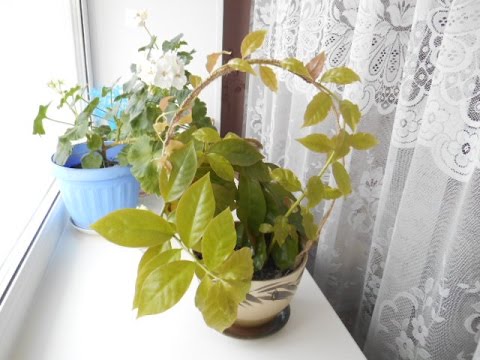

Pereskia flowering.
Pereskia usually blooms at home without any difficulties. Flowering occurs in summer or early fall. However, some readers complain that the tree is growing by leaps and bounds, already almost rests against the ceiling, but does not want to bloom. What can be wrong? The fact that you have not created all the necessary conditions for the development of the transfer. Read our tips for caring for this leafy cactus, find and correct your mistakes, and we are confident that the plant will bloom soon.
Types of transfer
There are 17 species in the peresky genus. Under natural conditions, they all grow quite large, but when grown indoors, they are compact, very beautiful bushes. The most popular among flower growers is the peresky prickly. The plant forms a tall, spreading bush. The stems are highly branched and covered with short, hooked spines. The length of the short-petiolized leaves is 9 cm, and the width is 4 cm. The foliage is rather tough, bright green. The plant blooms with large (up to 5 cm), yellow or creamy pink flowers that have a strong aroma. The fruit with an orange-yellow skin resembles a gooseberry with a diameter of up to 2 cm.
Peroxia prickly
Peresky Godseff. The plant has thinner stems covered with bunches of long black spines. Oval leaves with a pointed edge are attached to the stem with very short petioles. The length of the leaf reaches 6 cm. The leaf plate is colored light green with a greener central part. On the reverse side of the leaf, pinkish or purple shades prevail. Small flowers are white or cream colored.
Pereskia Godseff
Pereskia is orange. The plant has a tall, weakly branched shoots with large leaves. A relief pattern of veins is visible on the leaves.Orange-red large flowers resemble poppy heads with a diameter of 5-6 cm. The plant bears fruit with yellow berries in the form of small cones, which exude a rich pineapple aroma.
Pereskia orange
Pereskia Grandiflora. The plant forms a tall shrub covered with bright green large foliage. When it gets colder to + 10 ° C, this species sheds most of its foliage. Large pink flowers form capitate inflorescences at the ends of the branches.
Pereskia grandiflora
Pereskia Weber. The plant forms compact bushes suitable for making bonsai. The plant is distinguished by abundant flowering, which occurs in April-August. Small snow-white flowers densely cover young shoots.
Pereskia Weber
Reproduction of pereskii
Pereski is propagated by seed and cuttings. Seeds of pereskii are sown in spring in a container with a loose substrate and kept until emergence at a temperature of 20-22 ºC. When the seeds germinate, the crops are placed in a bright, warm place, but at first they are protected from direct sunlight. Fortified and grown seedlings are planted in separate pots.
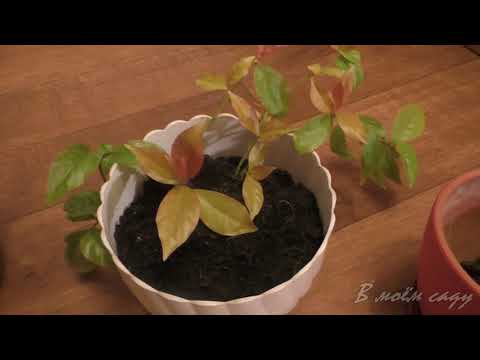

For the cuttings procedure, in spring or summer, cuttings are cut from the stems of the pereskii, planted in a peat or perlite substrate and covered with a transparent cap to create greenhouse conditions. Rooting occurs best at a temperature of 25-28 ºC. You can grow roots by placing the cuttings not in the substrate, but in a container with water: in such conditions, the roots will appear within three weeks. Rooted cuttings are planted in pots.
Reproduction
Reproduction of pereskia prickly occurs by cuttings and seeds. When grafting, an adult shoot is cut off, which has not had time to woody, on which there are from one to two nodes, and is placed for rooting in a moist substrate of perlite and peat. Cover with foil to create a greenhouse effect.
The first roots will appear in two to three weeks. They must be planted carefully, the roots are still quite weak.
When propagating by seeds, seeds are selected from the fruits and sown in containers (container, box). Leave to germinate at temperatures up to 25 °.
The grown sprouts that appear dive and grow further.
Pests and diseases of pereskii
Pereskii diseases and their treatment.
From excessive moisture, especially in low air temperatures, the roots and neck of the peres can rot. The absence of drainage material in the pot or its insufficient amount contributes to the defeat of the cactus with rot. To prevent rotting, you need to observe a balanced watering regime and remember that the lower the air temperature in the room, the less often you need to water the peres.
Sometimes mold appears on the stems of the cactus. This is a sign of a fungal disease called gray rot. This disease occurs against the background of high humidity with poor ventilation. Create the correct conditions for crossing, and cut out the affected areas with a sterile instrument, grabbing a piece of healthy tissue. After cleaning the wounds, treat the plant with a fungicidal solution.
Read also: Features of caring for snails at home
Pereskii pests and fight against them.
Reproduction methods
Features of home care for the Radermacher flower
Pereskia is propagated mainly by cuttings. Seed propagation takes a lot of time and requires constant monitoring of the seedlings. At home, it is practically not used.
Semi-lignified and green parts of the branches are suitable as cuttings. Usually, the apical cuttings are cut, they are placed in a heteroauxin solution for a couple of hours. The cuttings are rooted in loose, moist soil. The addition of vermiculite, charcoal, a small amount of dry chicken manure to it is encouraged. When using cuttings from the middle part of the stem, they are deepened to the upper bud. In most cases, it is she who gives a new escape.
After rooting, the pot with young plants is kept in a well-lit place. If necessary, arrange additional lighting. Monitor moisture closely. Overflowing or drying out of the soil can kill newly rooted cuttings.
Types and varieties of pereskii
Several types of pereskii are grown in room culture.
Pereskia grandiflora (Pereskia grandiflora),
or pereskia bolshevostvenny, or pereskia grandiflora in natural conditions it reaches a height of five meters, and the thickness of its trunk can be about 25 cm. The foliage of this plant is leathery, shiny, falling at temperatures below 10 ºC. The shoots are equipped with a large number of spines up to 3 cm long. The flowers of the pereskii grandiflora collected in inflorescences are pink in color.
Pereskia bleo
- this plant has large leaves with a pattern of veins. The flowers of this species, which open in summer, resemble medium-sized red-orange roses. The fruits of the orange pereskii are cone-shaped, bright yellow, with a characteristic pineapple odor. The species was first described in 1823.
Pereskia weberiana
- a succulent plant up to three meters high with a thickened rhizome. It blooms from early spring to early summer with white flowers up to 1 cm in diameter.
Pereskia aculeata (Pereskia aculeata),
Pereskia godseffiana
- a rare variety of pereskia prickly with golden leaves and edible fruits resembling unripe gooseberries.
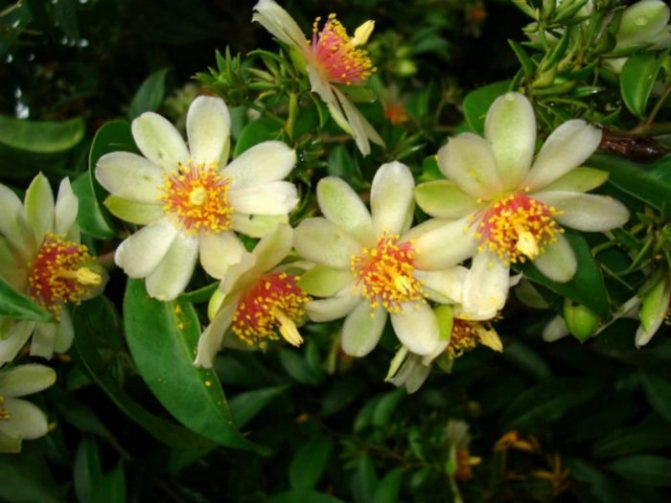

Such an ancient genus of cacti as pereski (Pereskia) is considered a member of the cactaceae family (Cactaceae). The homeland of this plant is Central and South America. The first cacti, which are the ancestors of modern ones, possessed foliage, but over time it was transformed into thorns due to the too hot and dry climate. The stem of this plant began to perform all the functions of foliage.
The first plant of this kind was described by C. Plamier in 1703. This genus was named after the scientist Nicola-Claude de Perese, who was French. The Pereskians became members of the cactus genus thanks to Karl Linnaeus. However, in 1754, they were separated into a separate genus of Peresky by Philip Miller.
Botanical description
Pereskia (lat.Pereskia) belongs to the Cactus family, but in appearance it is completely different from them: instead of needles, it has thick leaves. However, for botanists, this is not a novelty, since they are well aware that previously almost all cacti were with leaves, and only the harsh habitat and dry climate made them thin to the needles. Pereskia grows in the form of a large bush or a small tree, there are climbing species. There are thorns on the stem. The leaves are thick, beautiful green or purple in color. Their shape is oval or lanceolate. The sizes of the leaves of the varieties differ, they can be from 1.5 to 25 cm.
It will be useful for you to learn about the magical properties of a cactus, what species are suitable for home breeding, how to care for this plant, namely: how to water properly, fight pests and diseases, also learn all about vegetative propagation and sowing cactus seeds.
As it grows, the beautiful and bright color of the foliage fades, during the dormant period they generally fall off, and the trunk takes over all their functions. In the axils of the leaves there are areoles with spines. The thorns grow either one at a time or in groups.
Flowering occurs in summer or autumn. The flowers are similar in appearance to those of a rose hip. One can rarely meet them. They usually appear in groups. In many species, the flowers have a pleasant citrus scent.
After flowering, the fruiting period begins. The fruits are juicy. They contain large black seeds inside. The dormant period lasts from October to February.
Central and South America is considered the birthplace of Pereskiy. This plant was first described in 1703. Description provided by Charles Plumier. The flower owes its name to the surname of the famous French scientist humanist Nicola-Claude de Peyresque.Karl Linnaeus ranked the plant as a cactus. And a little later, in 1754, the English botanist Philip Miller singled out a separate genus - Pereskii.
Today this flower is popular with home growers. It can also be planted in open ground and in greenhouses.
Did you know? The largest cactus in the world is the giant cereus, its height - up to 25 meters, weight - up to 10 tons. And the smallest thorny plant is the Blossfeldia. It reaches a height of one to three centimeters.
Caring for ossification at home
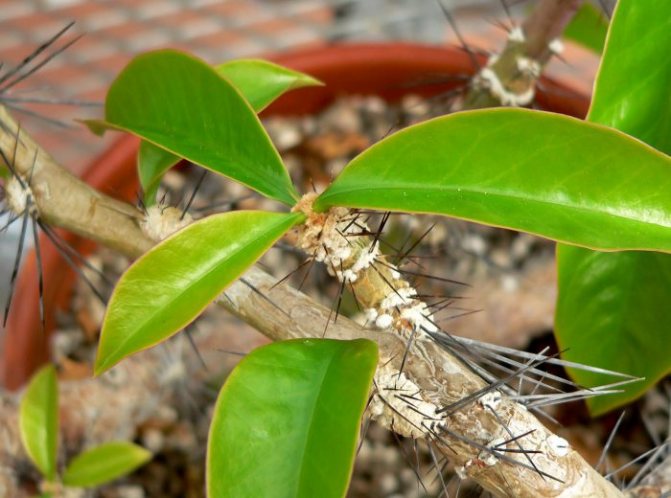

Illumination
In winter and autumn, a cactus also needs a lot of light. With the onset of the spring period, there is a significant increase in the level of illumination, while switching to it must be gradually taught.
Temperature regime
Air with a low moisture content is quite suitable for content, but the cactus foliage looks more impressive if it is regularly moistened with soft water from a sprayer.
How to water
In the spring and summer, water the plant as the soil in the pot dries up. In autumn, it is necessary to water less and less each time. And in winter, watering should be very sparse, but at the same time, make sure that the foliage does not fall off.
Top dressing is carried out in spring and summer once every 2 weeks. For this, fertilizers for cacti are used (take ½ part of the dose recommended on the package). In winter, fertilizers should not be applied to the soil. When choosing a fertilizer, it should be borne in mind that a high level of nitrogen is dangerous for pereskii, because it can provoke rotting of the root system.
Earth mixture
Suitable soil should be loose, nutrient-rich and humus-filled. To prepare the soil mixture, it is necessary to combine clay-sod and leafy soil, sand and humus in a ratio of 2: 2: 1: 2.
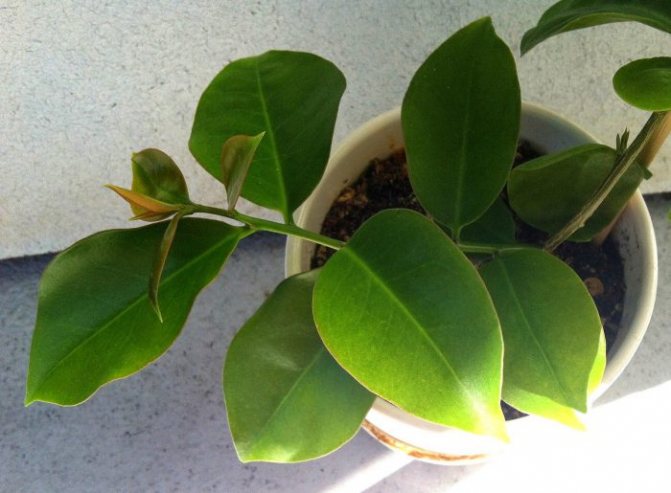

Transplant features
Young specimens are transplanted into larger pots several times a year (as they grow up). In order not to damage the roots, it is recommended that you carefully transfer the cactus from pot to pot. Adult plants are subjected to this procedure only if absolutely necessary, for example, when the roots are no longer placed in the pot.
When planting, it should be borne in mind that the roots of this cactus are quite powerful, therefore, a container suitable for planting should be quite voluminous and wide. Don't forget a good drainage layer. After a short time after the transplant, a sharp spurt in growth is observed in the pereski.
Reproduction methods
This plant can be propagated by cuttings and also grown from seeds.
Seeds are sown in boxes in the spring and placed in heat (20 to 22 degrees).
Cuttings are carried out in the spring and summer. Cuttings are cut, on which 1 or 2 nodes are located. They are planted for rooting in a moistened substrate consisting of peat and perlite, and covered with a film on top. To speed up rooting, they are placed in heat (from 25 to 28 degrees). Water is also great for rooting. Rooting occurs rather quickly after 14–20 days. After rooting, the cuttings are transplanted into pots, while doing this very carefully so as not to damage the roots.
Pests and diseases
The root collar and roots begin to rot during overflow, especially during a cool winter. The reason may be poor soil drainage or a drainage layer. Be sure to follow watering rules and use only suitable soil for planting.
Gray rot of vegetable crops appears on separate areas of the shoots. High humidity or stagnant air in the room can contribute to its development. Place the plant in more favorable conditions for growth and treat it with special chemicals.
Mealybugs can settle. If there are few cacti, then the pests are cleaned off with a brush with a stiff bristle. Treat the plants with an anti-coccid drug if necessary.
Mites and thrips can also settle, which harm shoots, foliage and flowers.To get rid of them, drugs of the appropriate action are used.
Growing difficulties
- The foliage turns pale - a lot of light.
- Stopping growth - poor watering in summer or overflow in winter, the plant was not transplanted on time.
- The shoots are stretched out - little light.
- The tip of the shoot wrinkles, spots of soft rot can be found below - stagnation of moisture in the soil (especially in winter).
Growing difficulties
Sometimes, when growing pereskii, certain difficulties can be observed. Among them:
- stunting - usually it occurs due to insufficient watering or too small a container in which the flower grows. The problem should go away as soon as you establish proper watering and transplant the plant;
- elongation of shoots, an increase in the length of internodes - as a result of a lack of light. To solve the problem, you need to choose another place for the flower, more illuminated, or install additional lighting;
- Blanching foliage is a sign of excessive lighting. It is necessary to shade the pot with the plant.
So, if you are looking for a beautiful and unpretentious plant that needs to decorate an apartment, then the peresky cactus is perfect for these tasks. Cacti also include: mammilaria, aloe, ripsalis, echinocactus Gruzoni, hymnocalycium, Decembrist flower, hatiora, epiphyllum, prickly pear.
It is characterized by long and original flowering, fast growth, and pleasant aroma. In addition, its trunk is decorated not with thorns, but with leaves, which is quite unusual for representatives of cactus.
Pereskia is one of the oldest cacti. The ancestors of modern cacti also had “normal” green leaves, which, as the plants adapted to the conditions of the arid desert climate, turned into thorns, and the stem took over the functions of the leaves. The Peres genus has about 20 species that live in warm and dry regions - from Mexico in the North to the tropics of South America in the south.
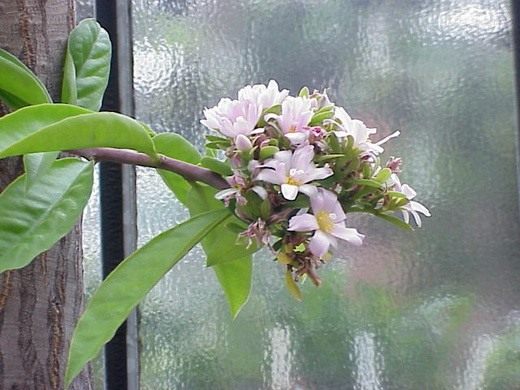

Pereskia is an ancient genus of cactus with foliage. The ancestors of modern cacti had leaves, which, as the plants adapted to the conditions of the arid desert climate, turned into thorns, while the stem took over the functions of the leaves. Most peres are large shrubs or low-growing trees with strong thorny stems. In places where they grow, they are used as green hedges. They also have edible fruits.
Pereskia are easy to care for, grow quickly and have a strong root system. Cactus lovers often use pereskia as a rootstock for grafting other cacti, especially zygocactus is grafted onto pereskia.
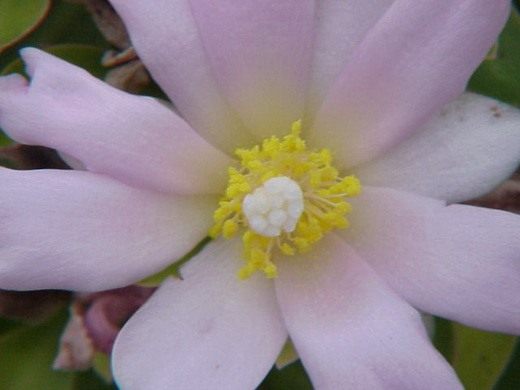

Growing features
Location
Pereskia is photophilous, it is better to keep it on the windowsills of the south side of the apartment, shading it during especially hot hours so that burn spots do not appear on the leaves. In the shade, the pereskia stops growing and dies. Pereskia is thermophilic. It grows well at a daytime temperature of 23-25 C. At night, the air temperature should be several degrees lower. In winter, the plant is placed in a warm room. The fleshy, thick leaves are very sensitive to cold.
Lighting
Bright light
During the period of intensive growth, the plant is watered abundantly, but making sure that the soil has time to dry out before watering.
Moderate. Leaves look best if the plant is periodically sprayed with soft water, but the pereski also tolerates dry air.
Reproduction
Propagated by stem cuttings cut in spring or summer. Cuttings root most quickly at a temperature of 25-28 C. Cuttings can also be rooted in water.
Pereskia requires fertile and permeable soil, for which they make up a mixture of garden, leafy soil and coarse sand, adding a little charcoal to it. The fast-growing pereskia is transplanted annually in the spring, older plants - every two to three years.
Beneficial features
Cactus lovers often use pereskia as a rootstock for grafting other cacti, especially Schlumberger is often grafted onto pereskia.
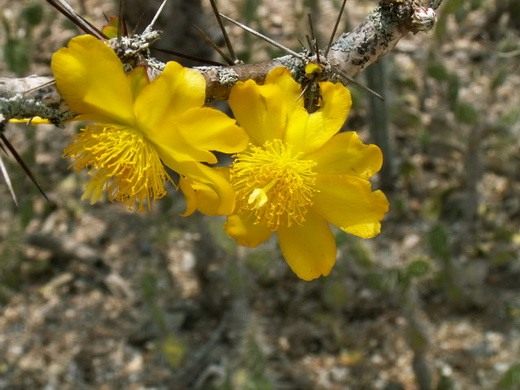

Care
Pereskii tolerate direct sunlight, grow successfully on southern windows. They can grow on western and northern windows with sufficient light, but they bloom extremely rarely. It must be remembered that with prolonged cloudy weather in the autumn-winter period, or after purchasing the plant to direct sunlight, the plant should be accustomed gradually.
Purchased copies and copies that stood in the shade (or after winter) cannot be immediately exposed to the sun's rays, you should gradually accustom them to them.
In the summer, it is useful for better health and hardening of the plant, to take it to the open air (balcony, garden). In this case, the plant should be kneaded so that it is protected from precipitation. If you do not have the opportunity to keep the plants outdoors in the summer, you should regularly ventilate the room where the pereski is kept.
In the autumn-winter period, the plant is also kept in good lighting. In the spring, with an increase in the level of illumination, they gradually accustom to more light, in order to avoid burns.
Pereski temperature is preferred around 22-23 ° C, with fresh air supply. In autumn, the temperature is lowered to 15 ° C, the plant is prepared for a dormant period. In winter, the plant begins a dormant period - at this time it is advisable to keep it at a cool temperature (12-16 ° C), not lower than 10 ° C. Provide good lighting, and regularly ventilate the area where the pereski is located.
Watering regularly in spring and summer, as the upper layer of the substrate dries up, decreases in autumn, and rarely in winter, just so that the leaves do not fly around. Do not forget that excessive watering is detrimental to overexposure.
Air humidity does not play a significant role.
From April to September, it is necessary to regularly, twice a month, feed the plants with half concentration of fertilizers for cacti; they do not feed them during the dormant period in order to avoid unwanted growth. It must be remembered that in mineral fertilizers the level of nitrogen should be less than the other elements, since an excess of nitrogen can provoke rotting of the roots, normally you can adhere to this ratio: nitrogen (N) -9, phosphorus (P) -18, potassium (K) - 24. It is better to refrain from using organic fertilizers.
The plant requires formative pruning, which is carried out in the spring. The resulting cuttings can be used for propagation.
Young plants are reloaded several times a year - as they grow. Adults - as needed, when the roots fill the pot. An earthen mixture for pereski is suitable fertile, loose with the addition of humus (leaf, clay-soddy, humus, sand in a ratio of 2: 2: 2: 1). Since the root system is powerful, the peres should be planted in large, wide pots. Provide good drainage at the bottom of the pot. After the transplant, as a rule, a sharp spurt in growth follows.
Pereskia is propagated mainly by ripe, but not lignified cuttings rooted in a moist, loose substrate.
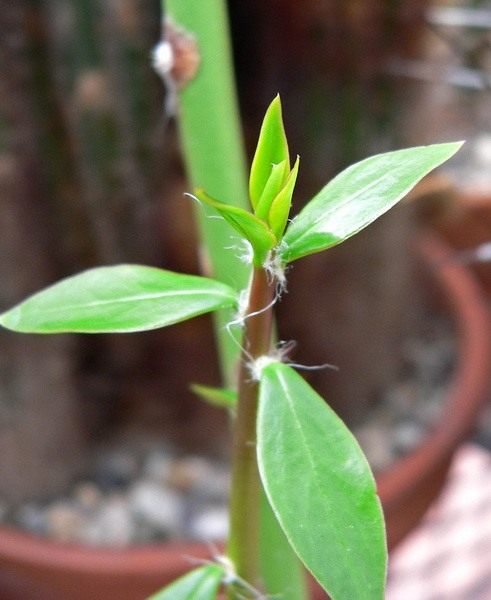

Views
Pereskia large-flowered (Pereskia grandiflora). Synonym: Rhodocactus grandifolius, Cactus grandifolius. In natural conditions, they reach up to 5 meters in height, the trunk reaches 20 cm in diameter. The leaves are leathery and shiny, falling off in winter at temperatures below 10C. There are a lot of thorns on the stem, sometimes reaching 2-3 cm in length. Pereskia has pink flowers, collected in inflorescences.
Pereskia orange (Pereskia bleo De Candolle). Synonym: Cactus bleo Kunth. The plant reaches a height of up to 5 meters in nature. The leaves are large, the pattern of veins is clearly visible on them. Blooms in summer. Bright orange-red flowers, up to 5-6 cm in size, resembling small roses, open in the late afternoon. Inedible, but expressive, bright yellow cone-shaped fruits with a smell reminiscent of pineapple. By regular pruning, the plant can be made compact.
Pereskia prickly (Pereskia aculeata).A plant from the American tropics, where these plants are used as a hedge or for obtaining edible fruits - from which it is named "Barbados gooseberry". This species of pereskii has spread from the southeast of the United States of America (Florida) to the forest and steppe regions of Brazil and Paraguay. A bushy and climbing plant, reaches a length of 10 m.This species, considered one of the primitive representatives of cacti, has a fleshy, abundantly branching stem with a diameter of 1.5 cm and lanceolate or oval leaves, dark green, up to 9 cm long and about 4 cm wide Over time, the leaves at the bottom of the stem fall off and remain brown areoles with 1-3 straight, hard brown spines. In the lower part of the areoles, under the base of the leaves, there are two shorter, curved spines. In late summer - early autumn, cupped, yellowish-white with a pink tinge, slightly fragrant flowers with a diameter of 2.5-4.5 cm bloom on young shoots of the pereskii.Fruits are edible, yellow, 2 cm long.
Pereskia godseffiana - a number of sources mention it as a separate species. But most authors attribute it to the P. aculeata var. Godseffiana variety.
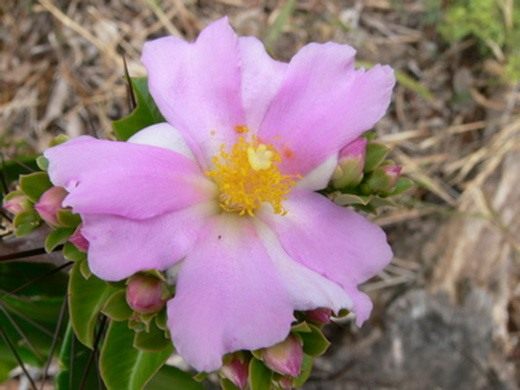

Possible difficulties
Lack of gain.
The reason is insufficient watering in summer or waterlogged soil in winter. This also happens in the absence of timely transplantation and abundant summer watering.
With a lack of light, especially in summer, the plant stretches, the length of internodes increases.
Shriveled end of the stem, spots of soft rot at the bottom. The reason is waterlogging of the soil, especially in winter.
Damaged by: mealybug, spider mite, scabbard.
Main types
Pereskia grandiflora (Pereskia grandiflora)
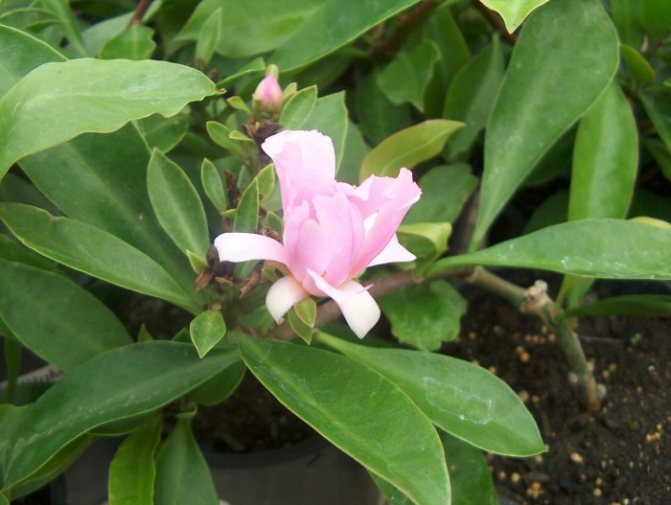

Shiny leathery leaves fall off with the onset of winter, but only if the room is less than 10 degrees. The stem is covered with a large number of thorns, the length of which can be equal to 2 to 3 centimeters. The flowers collected in inflorescences are painted pink.
Pereskia bleo
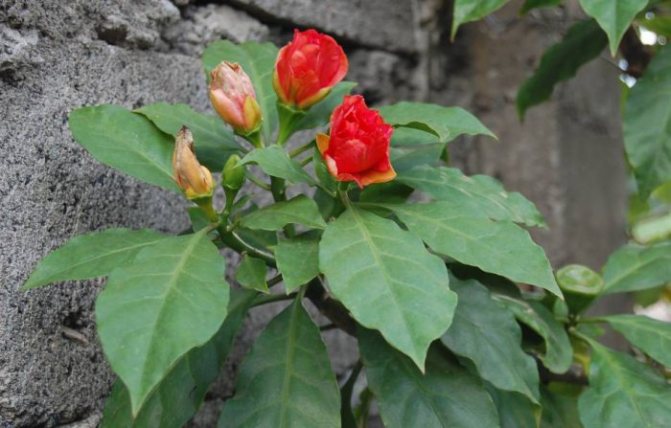

On rather large leaves, veins are clearly visible. Red-orange flowers reach 5-6 centimeters in diameter. They resemble small roses and open at the end of the day. The cone-shaped fruits of a rich yellow color resemble pineapple in their aroma, but they should not be eaten. Regular pruning is recommended to keep the cactus neat and compact.
Read also: Diseases and pests of spathiphyllum, how to secure "female happiness"
Pereskia aculeata
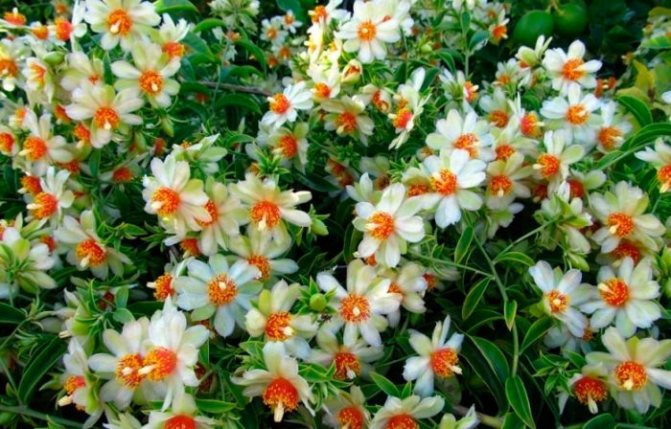

Pereskia aculeata var. Godseffiana
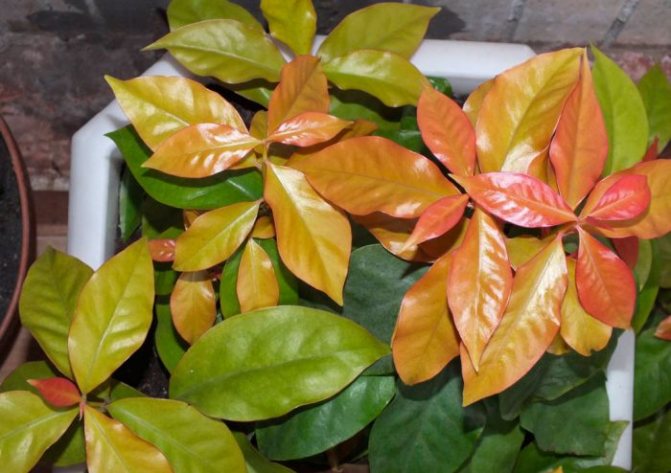

It is also a fairly popular variety, but at the same time in some sources it is distinguished as a separate species (Pereskia godseffiana).
Popular types
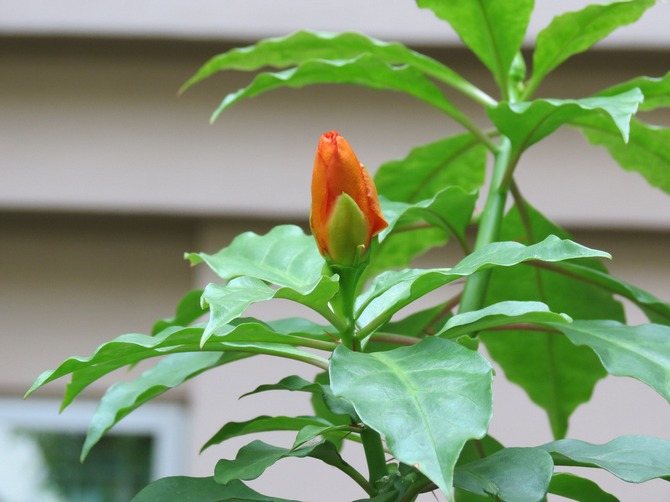

Large-flowered pereskia is distinguished by shiny leathery leaves, they crumble at temperatures less than 10 degrees, that is, in winter. The stem is covered with thorns that are up to 3 centimeters long. The inflorescences have a beautiful pink color.
Orange peresky has large foliage with well-defined veins. The color of the flowers is red-orange, and the sizes correspond to medium-sized roses, that is, up to 6 centimeters, they open in the evening. Such a plant has fruits, the smell of which is similar to pineapple, the color is bright yellow, but they are not edible. In order for the plant to acquire a neat appearance, it must be regularly trimmed.
The prickly pereskia has the appearance of a climbing bush, the stem is fleshy, and branching profusely, its diameter can reach 1.5 centimeters. The color of the leaves is dark green, their shape is oval, the length is up to 9 centimeters, and the width is up to 4. After the time elapses at the bottom of the plant, the leaves crumble, and areas with thorns remain, up to 3 pieces on each former leaf. In this case, the color of the areola turns brown, and in its lower part there are two curved spines.At the end of the summer period, and by the beginning of autumn, on the processes of the young species, a color that has a fragrant smell, a cup-shaped shape, and a white-yellow color with a pinkish tinge bloom. The flower diameter can be up to 4.5 centimeters. Such a plant has fruits, yellow in color, the length of which is 2 centimeters, they are edible.
Pereskia Godseff is considered the most common; some manuals define this plant as a separate species.
Pereskia is an amazing plant that, despite the presence of leaves, belongs to the Cactus family. She is the progenitor of many thorny succulents, but she never got rid of the foliage herself. The peresky cactus lives in South America and in the photo it is an ornamental, flowering shrub. Few growers will refrain from buying a pereskia and will be absolutely right. This unpretentious plant will become a real home decoration.
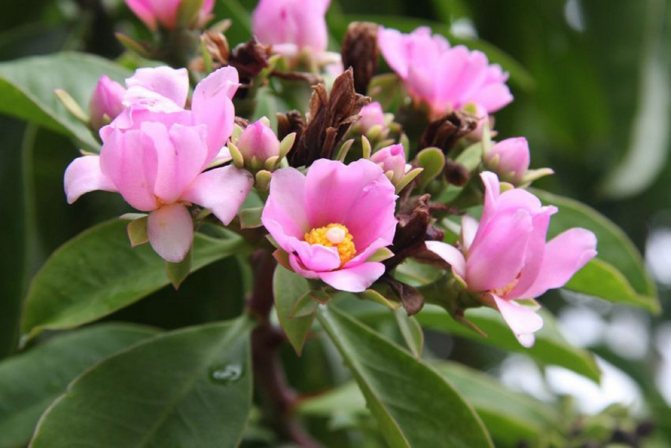

Care features
Location and lighting
Pereskia is a leafy cactus that requires warmth and light. The flowerpot is recommended to be placed on the south or east window. At the same time, exposure to direct sunlight can be destructive, therefore, in summer, at lunchtime, it is advisable to shade the leaf cactus a little. To do this, you need to put other indoor plants nearby, stretch a net or tulle on the glass.
Lack of lighting has a negative effect on oversight. Even full-fledged care will not help to restore the bush until a sufficient supply of light is provided.
In the shade, the stems stretch, become thinner, the leaves fade, become small. Varieties with multi-colored leaf plates are especially affected. At the same time, it is necessary to accustom to the sun gradually, young seedlings or recently purchased plants cannot be placed immediately in the most illuminated place.
Temperature
Caring for pereski involves maintaining a favorable temperature regime. During active growth, it is desirable to keep it indoors at + 20… + 25 ° C. The flower feels good when the indicators rise to +30 ° C, a value of +10 ° C is destructive for most species. In winter, it is necessary to lower the temperature to + 12 ... + 15 ° C, ensure peace so that the pereski can rest, gain strength before the next flowering.
Air humidity and watering
Unlike traditional cacti, this variety needs regular soil moisture. There is no need to wait for the earthen coma to dry out, the top layer is enough. At the same time, do not forget that succulent accumulates moisture in the fleshy aerial part, therefore waterlogging can lead to decay of the root system. The bush will react to the lack by dumping foliage.
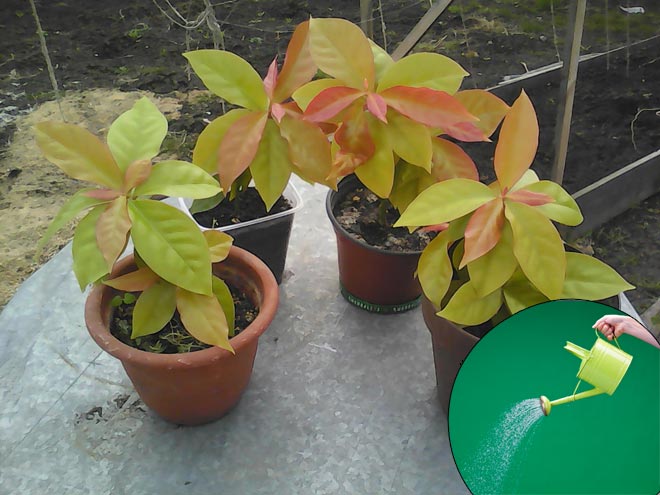

Water with separated water at room temperature. When caring for pereski at home, you should periodically spray the plant from a spray bottle. In summer, it is allowed to install a humidifier next to it or take a container with a indoor flower outside. In the latter case, it is necessary to exclude the impact on the cactus of atmospheric precipitation, drafts, strong winds.
When planting and replanting pereski, it is necessary to use a well-drained, nutritious soil. The root system must receive air and moisture to avoid problems with growth and development. It is recommended to use a special universal substrate for cacti and succulents.
If desired, the soil mixture can be made independently from leaf, turf, garden soil and river sand, trying to maintain the acidity at a pH level of 5-6. The introduction of a small amount of dry humus will slightly facilitate further care. Charcoal will reduce the likelihood of developing pathogens. Natural materials must be disinfected before use.
Top dressing and fertilizers
Beginning in March, leaf cactus needs additional nutrition. Home care when growing pereskii involves regular feeding with a frequency of 1-2 times a month during the spring-summer period.As a fertilizer, it is good to use a weak solution of a universal complex mixture for cacti and succulents.
Always combine plant nutrition with watering. Choosing traditional mineral fertilizers, it is necessary to reduce the nitrogen content to a minimum.
After transplantation, it is not necessary to additionally feed the leaf cactus for 1-2 months in order to prevent an overabundance of active components that negatively affects it.
Reproduction of pereskii
Breeding is done by sowing seeds and cuttings. The first method is used less often due to the length of the process. Germinate seeds in a moist mixture of peat and sand at a temperature of + 20-25 ° C. Before sprouts appear, create greenhouse conditions with a bag or glass. The indoor flower should be propagated in the spring.
Cutting is a faster and easier way to breed leaf cactus. Cut the stems with a sharp knife into pieces 7-10 cm long, dry the cut a little. Root the cuttings in a moist substrate or water. The process usually takes about 3 weeks. When a developed horse system is formed, transplant the seedling into an individual container.
Diseases and pests
Excessive watering can lead to root rot. Proper care will protect against this problem. Having noticed signs of ill health, the pereskiy should be transplanted into a fresh substrate, carefully examining the roots and removing the damaged ones. The increased humidity of the air provokes the formation of mold. It is recommended to remove the damaged areas, change the conditions of detention.
In addition to diseases, the cactus is damaged by pests - spider mites, scale insects, mealybugs, thrips. Insects should be removed mechanically with a stiff-bristled brush. It is permissible to wash off with warm water, but avoid getting water on the soil. In case of a high degree of infestation, additionally spray with fungicidal agents.
Bloom
Blooms in the summer, affecting the beginning of autumn. The main distinguishing feature is that in this genus of plants the flowers are devoid of the typical cactus flower tube. The flowers are cream-colored, almost always clustered in inflorescences. The scent of the flowers is reminiscent of citrus. For the flowering of Godseff pereskii, a large vegetative mass is required, which is difficult under room conditions due to limited growth.
Reference! If the pereskia does not bloom, then it should be transplanted into a larger pot. To feed the plant, to accelerate the set of vegetative mass, hormonal growth preparations (heteroauxin) can be added.
What diseases can there be?
The plant has excellent and strong immunity, therefore it does not cause any special problems, the only thing is that the root system can suffer from rot if the irrigation regime is not followed, excessive stagnation of moisture in the pan and humidity in the room. Therefore, it is important to reduce watering and put the plant in a drier room, after treatment with antifungal drugs.
Less commonly, the plant damages the mealy worm and spider mites - they are treated with chemical insecticides.
Video: Pereskia - landing and leaving.
Useful articles:
Where grows
The birthplace of the Pereskians is South and Central America. These plants can be found on the islands of Tierra del Fuego, the Falkland Islands and the Caribbean. Especially a lot of tree cacti grows in Mexico, Arizona, and the US state of Texas. After they were brought to Europe, gardeners in many countries began to grow them for decorative purposes. Now pereskia can be found in China, India, the Mediterranean countries. It is cultivated in Australia, Israel, the Philippine Islands. In our country, these trees are grown on the southern coast of Crimea.
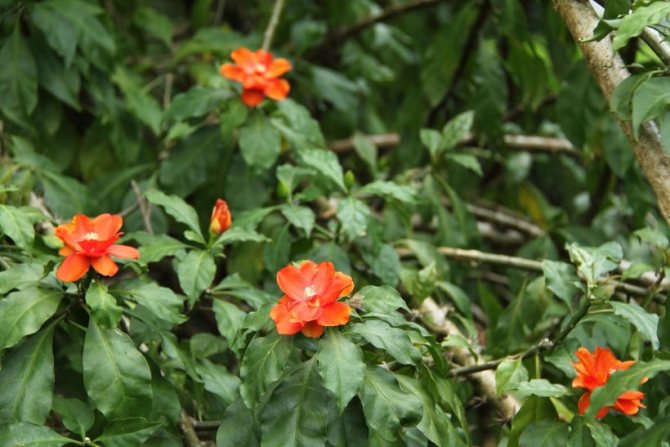

Storage and procurement
For medicinal purposes, young leaves with a bright color are collected. This should be done in summer or spring. After collecting, the leaves are dried by spreading them out on paper or a wooden surface. They should not be exposed to sunlight. Dried raw materials are stored in glass containers for up to two years. The fruits are harvested after ripening. They are eaten fresh or prepared. They can be pickled, dried, dried, stewed.Cactus fruits are used to make:
- jam
- compotes
- sauces
- salads
- second courses
- alcoholic drinks
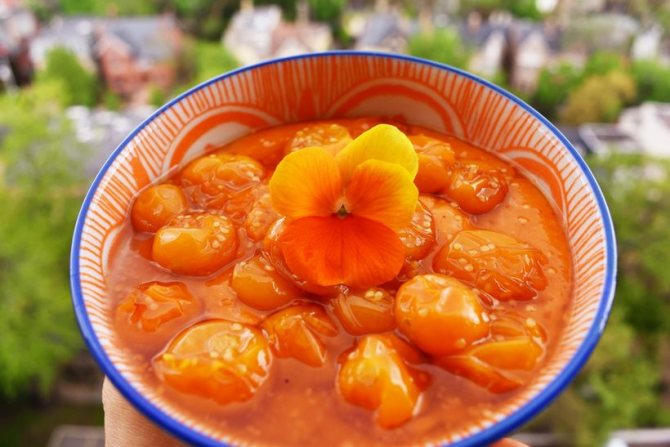

Are transplants required?
Pereskia in its growth and development forms a strong root system, therefore it is worth replanting often - transplanting is carried out in the spring and summer, always by transshipment, so as not to disturb the root system. The pot is chosen 3-4 cm larger in its diameter, having previously laid a good drainage layer on the bottom.
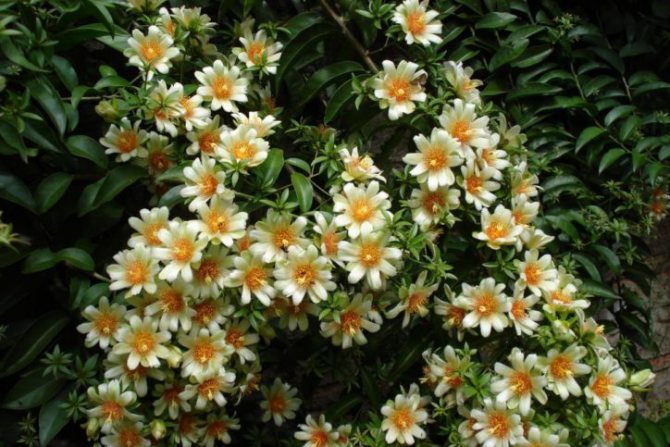

With regard to the soil, it can be a ready-made composition for a cactus, or prepare it yourself, mixing in equal proportions:
- Leafy and turfy land.
- Leafy rotted humus and coarse sand.
How to transplant pereskia
The root system and the plant as a whole develop quickly, so young pereski must be replanted annually in spring or early summer. Use a slightly larger container each time. Transplant adult specimens as needed - when roots begin to crawl out of the drainage holes.
Transfer with a lump of earth to avoid disturbing the root system. Place pieces of clay shards, pebbles, expanded clay on the bottom as drainage; the thickness of the layer should take about ¼ of the total volume. Pour some earth, cross the flower, fill the rest of the space with the substrate, leaving the root collar at the same level, press firmly against the surface with your palms so that the bush does not stagger.
The quality of the soil requires loose, light, medium nutritional value. It is prepared from leafy, clayey-sod and humus soil with the addition of sand (ratio 2: 2: 2: 1).
Pereskia pereskia
Plant of the Cactaceae family, native to South America.
Pereskia is a genus of succulent large shrubs or low-growing trees with strong, straight and thorny stems, sometimes with creeping branches. Areoles are found in the leaf axils; spines are arranged singly or in bunches. Leaves are developed, green or purple, fall off during dormancy. The flowers are wide open, often clustered in inflorescences, pink, white or orange-red, with a pleasant aroma. Fruits are spherical berries, smooth, yellow, edible.
The leaves and fruits of some types of pereskii are eaten (for making salads), and hedges are created from plants.
Pereskia is often used as a rootstock for grafting other cacti (Schumberger in particular).
Pereskia prickly (P. aculeate)
- leafy liana cactus with woody stems. Climbing shoots, clinging to the support with strong thorns. Spines up to 3 cm long, straight, thorns (2-3 pcs.) Are bent down. The leaves are fleshy, 5–10 cm long and up to 6 cm wide, dense, leathery, the top side is green, the bottom is reddish. Flowers up to 4 cm in diameter, white or pink, with a strong lemon scent.
Fruits - yellow berries up to 2 cm in diameter, edible, sweet and sour in taste.
Peresky Godseffa (P. godseffiana)
- leafy cactus with woody stems. Shoots are erect, up to 1.5 m long. The spines are straight, up to 3 cm long, first red, then darken. There are no thorns. Leaves up to 8 cm long and up to 6 cm wide, dense, leathery, the top side is green-yellow, the bottom is red-violet. Flowers up to 4 cm in diameter, white or pink, with a lemon scent.
Care
... The plant is warm and light-loving, requires protection from direct sunlight. During the growing season, watered abundantly, but after the top soil layer dries up. Spray from time to time with soft water. Starting from spring, complex fertilizers are applied 3-4 times per season. In winter, the plant is kept in a warm room at a temperature of 12-16 ° C, watered as needed. Young specimens are transplanted annually in spring, adults - once every 2-3 years. The soil mixture is composed of leafy earth and coarse sand (2: 1), with the addition of charcoal.
Propagated by stem cuttings in spring or summer. The cuttings are dried for several days, then planted in a loose soil mixture.
Growing difficulties
... Under unfavorable conditions of detention, it is damaged by mealybugs, spider mites and scale insects.
Other sections, from the main section "Chapter 6. Assortment of plants for the winter garden":
·
Abutilon
·
Agave
·
Aglaonema (aglaonema)
·
Azalea (azalea)
·
Aloe
·
Anthurium
·
Araucaria
·
Asparagus (asparagus)
·
Aspidistra
·
Asplenium
·
Aucuba
·
Begonia
·
Euonymus
·
Browallia
·
Vriesia
·
Hibiscus
·
Davallia
·
Dieffenbachia
·
Dracaena
·
Eugenia (eugenia)
·
Kalanchoe
·
Calathea
·
Callisia
·
Camellia
·
Cordilina (сrdyline)
·
Coffee tree (coffea)
·
Livistona
·
Lemon (citrus limon)
·
Mamillaria (mamillaria)
·
Euphorbia (euphorbia)
·
Monstera
·
Opuntia (opuntia)
·
Ophiopogon
·
Peperomia (peperomia)
> ·
Pereskia
·
Plectranthus
·
Ivy (hedera)
·
Pteris (pteris)
·
Sedum
·
Crassula
·
Thunbergia
·
Fatsia
·
Fatshedera
·
Ficus
·
Philodendron
·
Fittonia
·
Hoya
·
Cereus
·
Cyperus
·
Schefflera
·
Aeschynanthus
·
Yucca
Photo
Check out the photo of this amazing plant:
Growing pereski from seeds
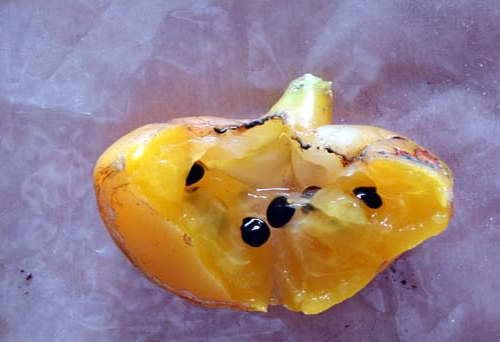

Fruit and seeds of pereskii photo
Go to the flower shop for seeds. Plan your sowing for spring time.
- It is necessary to prepare wide containers (regular or seedling box, plastic container) with a sand-peat mixture.
- Smooth the soil surface and spray with a fine spray, plant the seeds to a depth of 1-1.5 cm.
- You will need to cover the crops with a transparent bag or glass to create the effect of a greenhouse, put them under diffused lighting and maintain the temperature in the range of 20-22 ° C.
- Raise the shelter every day for ventilation, spray the soil surface as it dries.
- Under these conditions, seedlings will begin to appear in 2-3 weeks. After which the shelter is removed, and the remaining conditions remain the same.
- At the stage of appearance of 3-4 leaves, transfer the seedlings into separate containers, trying to pry the roots of the plant along with an earthen lump and carefully transfer.
Similar plants
- Pereskia bleo - a cactus from the genus Pereskia, reaches a height of up to 5 m, has beautiful bright orange flowers.
- Pereskia grandiflora (Pereskia grandiflora) - a cactus from the genus Pereskia, can also reach a height of up to 5 m. It blooms with pink flowers.
- Pereskia Weberiana - a cactus from the genus Pereskia, forms compact bushes. It blooms profusely, with snow-white flowers.
- Epiphyllum - a genus of leaf cacti, numbering about 20 species.
- Hatiora Is a genus of leafy cacti from the tropical forests of Brazil.
You can find out about another type of pereskiy, namely about Godseff, here.
Pereskia prickly is an amazing leafy cactus that can grow both indoors and outdoors. If you take good care of it, then you can see a beautiful ornamental plant with beautiful leaves and flowers pleasing to the eye.
If you find an error, please select a piece of text and press Ctrl + Enter.
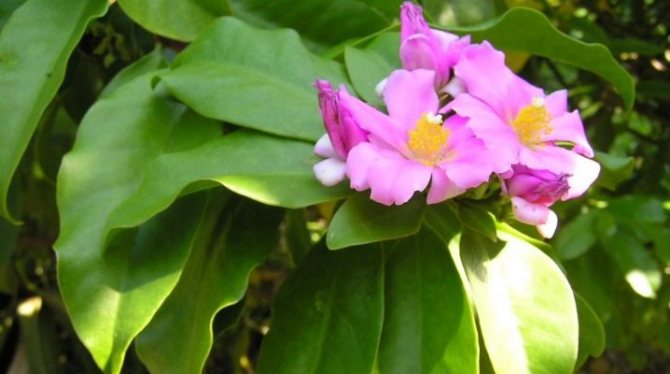

Nowadays, many people grow various types of plants in their homes and gardens. Often, a pereskia flower is planted in their plots. Today we will talk about what varieties exist and how to properly care for it.
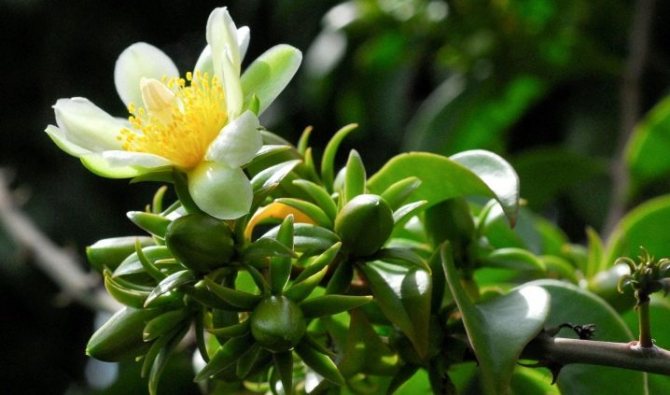

Popular varieties for home breeding: photo and description
In the wild, pereskii grows strongly, turning into huge bushes. But when grown at home, the plants are neat compact bushes. The most popular varieties are presented below.
Pereskia prickly (shark)
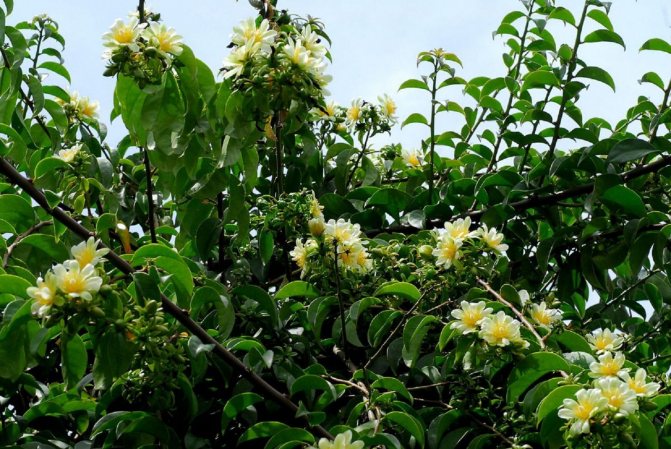

Peresky prickly blooms in late summer and early autumn
Cactus in the form of a liana with a dense stem. Shoots cling to the support with sharp thorns. The flowers are white or pink with a strong citrus aroma.
Orange
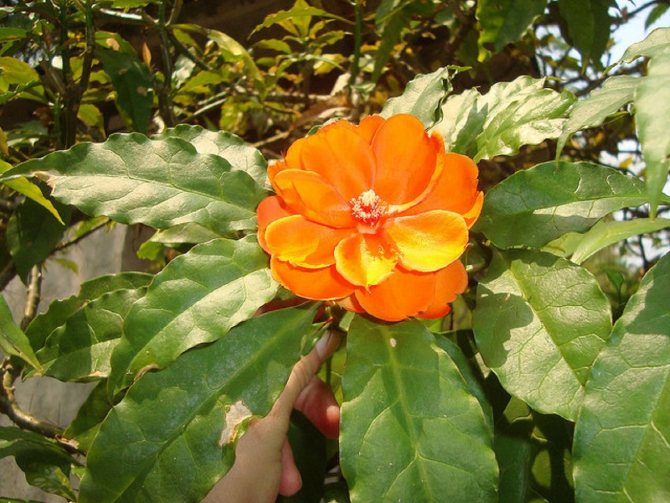

Externally, the flowers of orange pereskii look like small roses or rose hips.
A shrub with large leaves that can be up to 15 cm in length. The foliage is a rich emerald hue, the flowers are orange or red, spreading a fruity aroma.
Grandiflora (large-flowered)
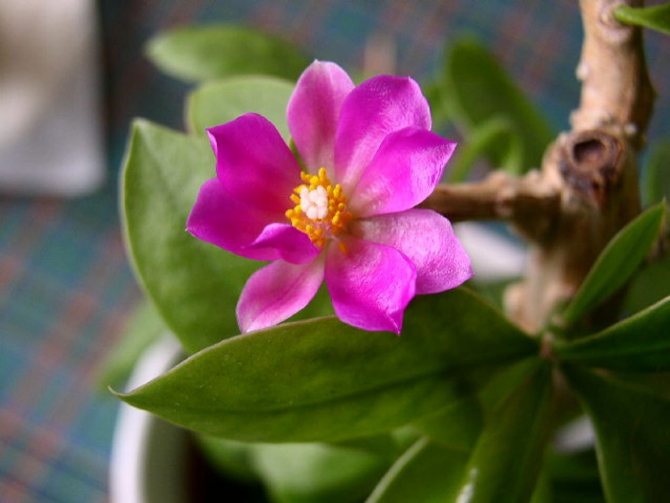

The typical color of Grandiflora is pink, from delicate to rich tone
The plant is a large shrub with bright green leaves. He loves heat, at temperatures below + 10 ° C, it sheds foliage. Flowers are collected in pink inflorescences.
Godseff
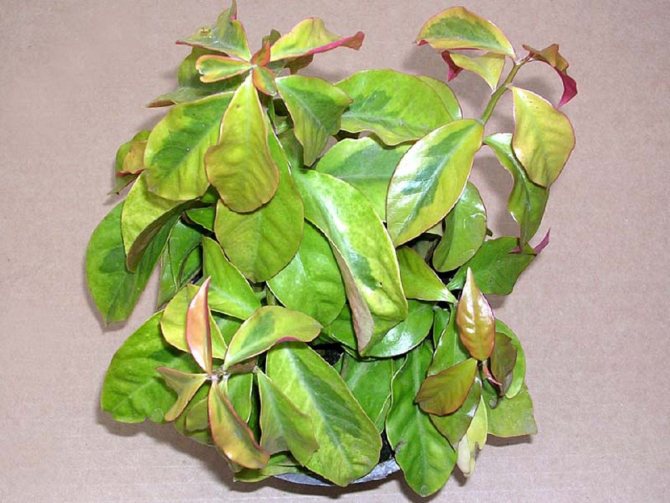

The flowers of this variety are white or cream
The stem is lignified, the cactus is covered with leaves, the bottom of which is painted in red-purple color. Pereskii Godseff has no thorns. Shoots grow straight up, flowers are pinkish, smell like lemon.
Species diversity
This genus of cacti includes 18 representatives, differing from each other in external description and care requirements.
Some types of pereski:
- Spiny, prickly, Pereskia aculeata or Barbados gooseberry - a liana growing around the support, about 10 m long. Leaves 3-10 cm in size, fleshy, elongated-oval. Pereskia sharkate produces round yellow or reddish edible fruits with a diameter of 1-2 cm.
- Godseff (Pereskia godseffiana) grows up to 10 m, forms straight thin stems covered with bunches of black spines. Leaves up to 6 cm long, growing from below are painted in a pinkish or purple hue. The flowers are medium in size, white or cream in color.
- Grandiflora, pereskia grandiflora or Pereskia grandiflora in height reaches 5 m, trunk 20 cm in diameter. Spines 2-3 cm long cover the brown rough stem. The leaves are elongated, up to 23 cm in size, attached to the twigs with petioles. The flowers are large, pink in color.
- Bleo or orange pereskia (Pereskia bleo) - a bush with large leaves 2-8 m high. Flowers similar to a rose open in the evening, have a size of 5 cm, orange color. The berries are bright yellow, inedible.
What does it look like
There are 19 plant species in the Peresky genus. These are mainly short trees or tree-like shrubs. There are also vines among them. Treelike plants have strong trunks with gray or greenish bark. They are deciduous or shed some of their foliage. The trunk height can reach 10-12 meters. Lianas have ligneous shoots that branch strongly. All plants of this species grow rapidly. For a year, the growth can be 20 cm. The root system is very strong, firmly anchored in the ground.
Both those and other types of plants are equipped with thorns. They are located directly on the trunks. These are long, sharp spines, up to 12 cm in size. They are located in areoles - thickenings in the form of bumps. Several needles come out of them at once, sticking out in different directions. A mature tree with a thick trunk can have dozens of thorns in one areola. On the shoots of vines, curved thorns grow, with which the plant clings to other trees, climbing up them.
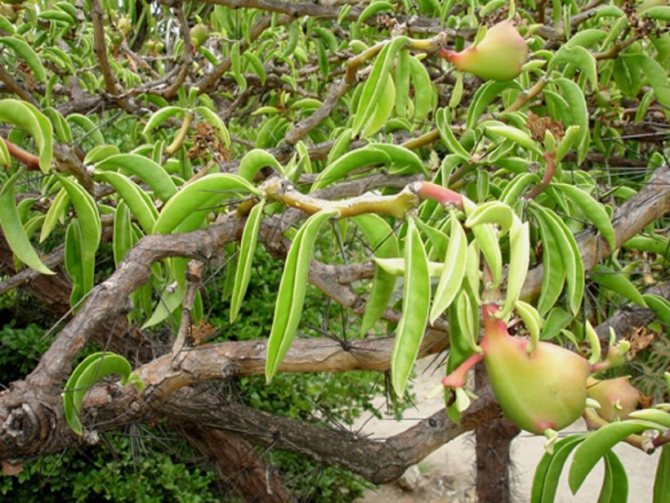

Pereskii leaves can be thin and thickened, it depends on the species. Some are fleshy like succulents. The shape is also different. Foliage is narrow and long or wide, oval, with a pointed end. In large tree-like forms, the leaf length reaches 25 cm. The surface is hard, shiny. A characteristic feature of the plant is its short petioles. This makes the leaves appear to be almost attached to the trunk. The color of the foliage is emerald green or burgundy, and the color can also change depending on the season. In winter, plants lose their cover.
In summer, the pereskia blooms. This is a magical period during which the trees are strewn with wonderful bright buds. Flowers of this genus differ in their structure from other plants of this family. Their calyx does not form a long tube like most other cacti. It is open, with unfolded petals, like a rose hip or rose. The diameter is up to 7 cm. Some plants have single buds, while others are covered with whole clusters of inflorescences. The color scheme is varied: from cream and vanilla shades to bright purple, scarlet, violet. Luxurious large flowers with an intense aroma attract many bees for pollination.
In the fall, fruits ripen on the trees. They form in large numbers, hanging from the branches like grapes. The fruits are small balls similar to cherry tomatoes. The pulp of the pereskii is juicy, dense, with a seed sac inside. The peel is thin, colored in yellow or red shades. In most cactus species, the fruits can be eaten.
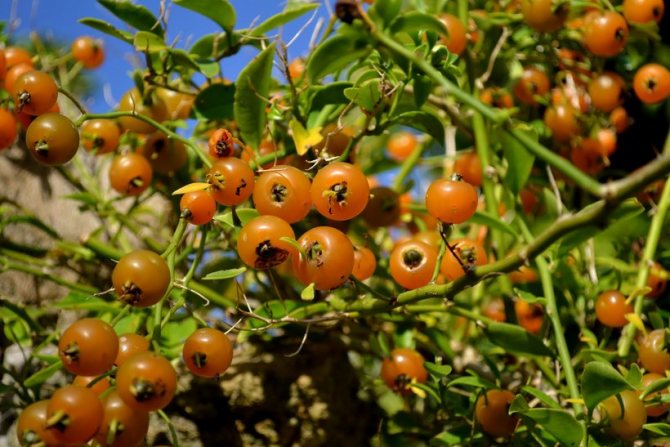

Growing conditions
Lighting
Pereskia is photophilous - put it at the south or east window. In summer, at noon, exposure to direct sunlight can result in burns on the leaves, it is necessary to shade with a curtain or half-covered blinds. In autumn and winter, be sure to place closer to the southern window; to extend daylight hours, turn on phytolamps or fluorescent lamps.
Favorably warm season can be spent outdoors. Take it to the balcony, veranda or put it in a secluded corner of the garden, where precipitation will not fall intensively, and the sun illuminates only in the morning and / or in the evening.
Air temperature
Keep the temperature between 22-24 ° C in spring and summer and ventilate the room frequently. By autumn, gradually reduce the temperature to 15 ° C. Wintering should take place within 12-15 ° C, but not lower than 10 ° C.

